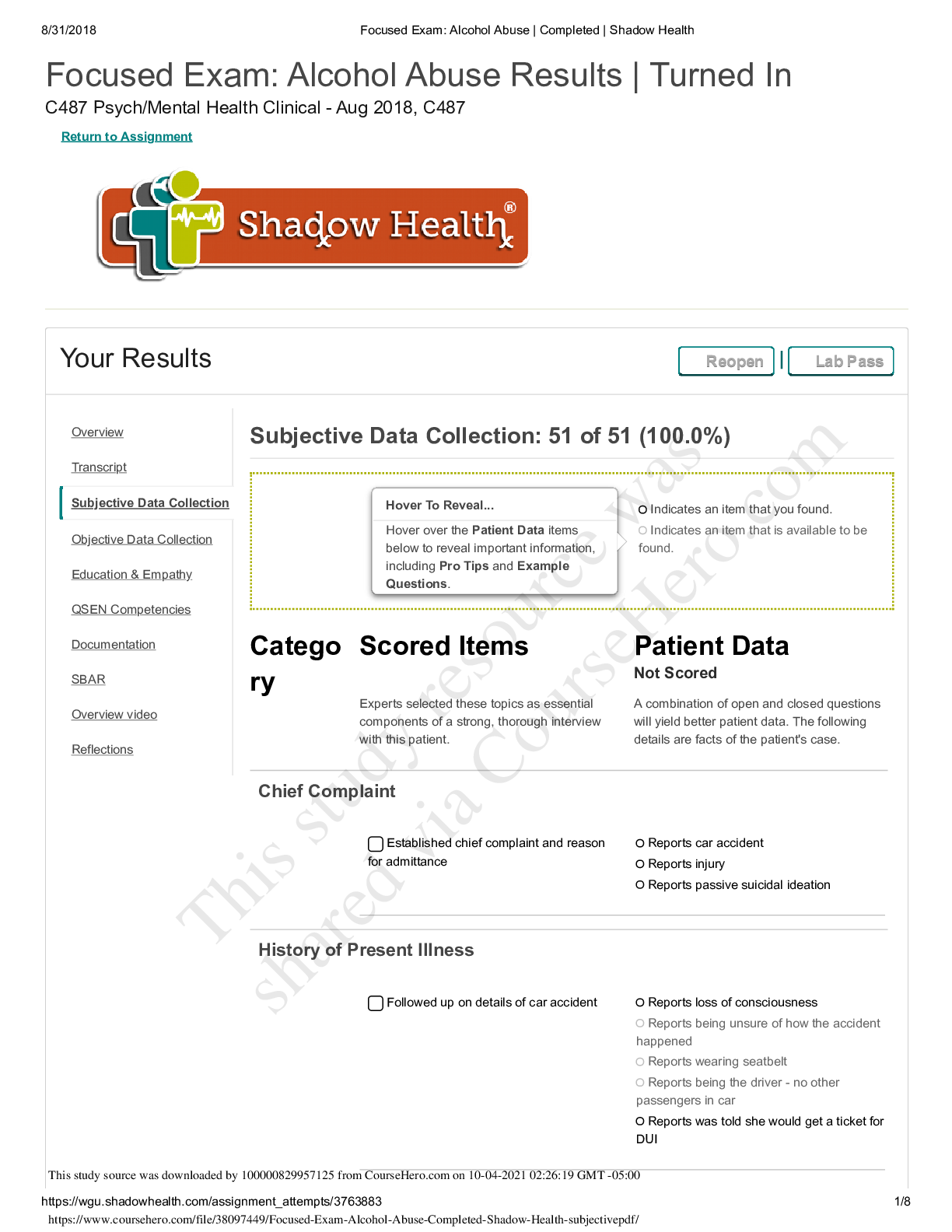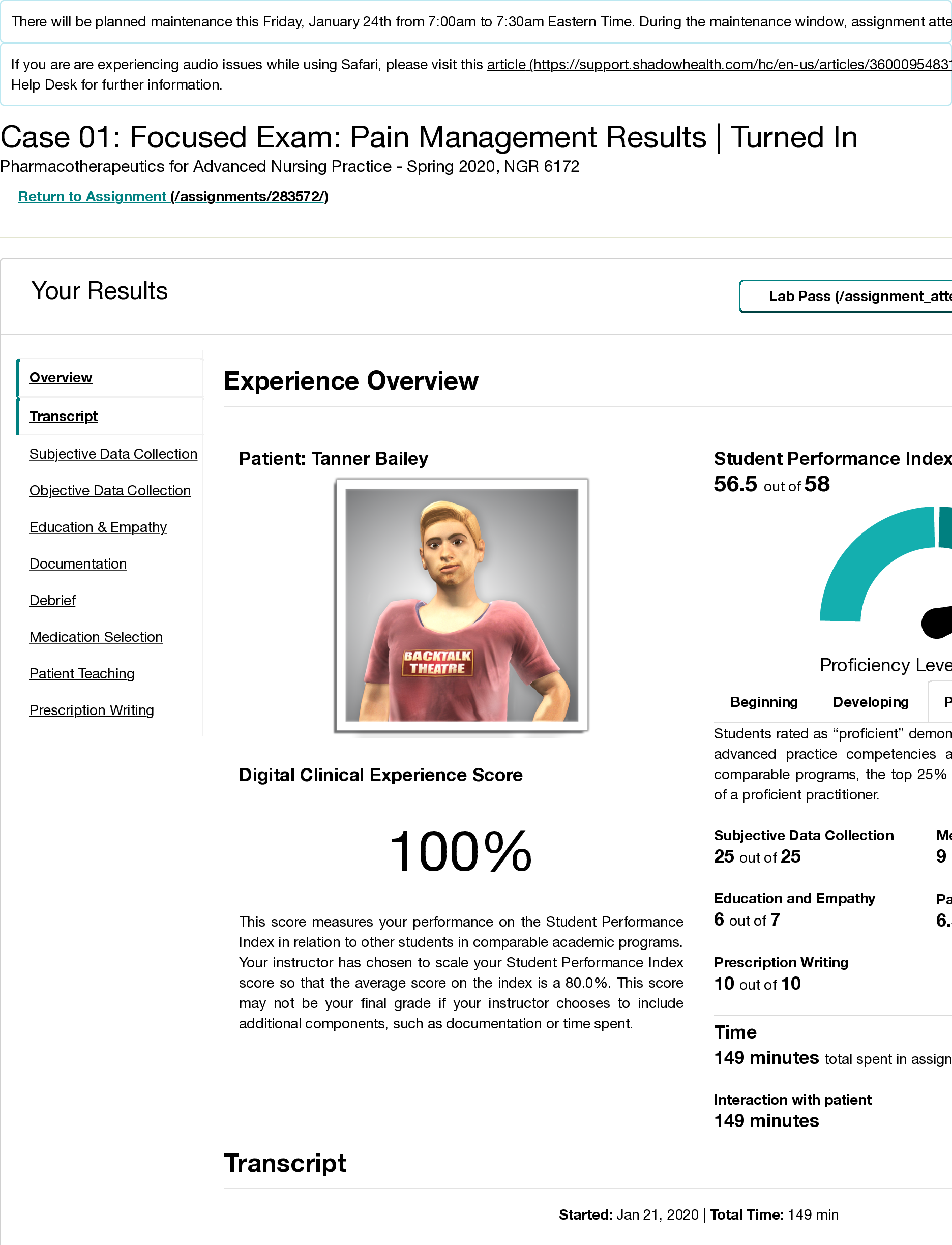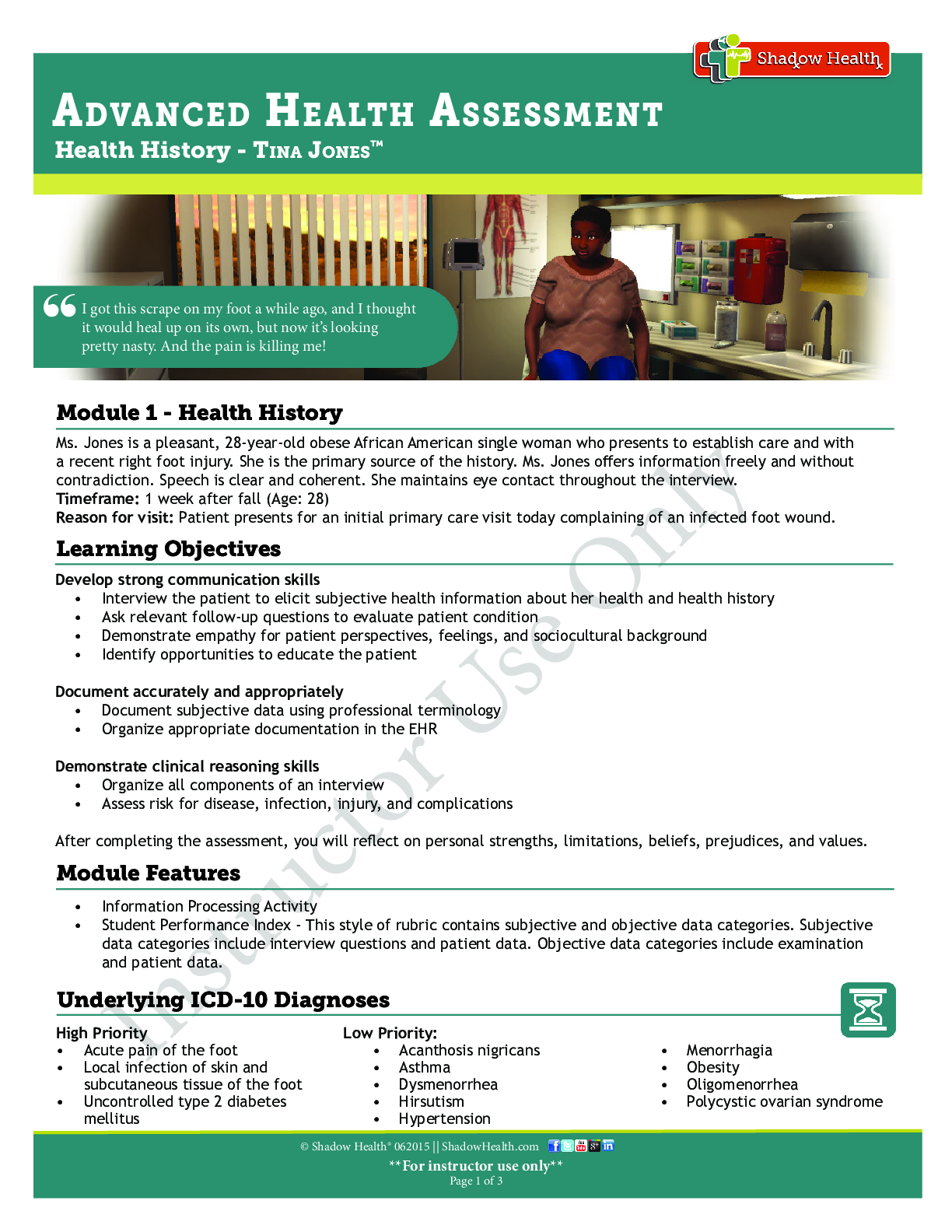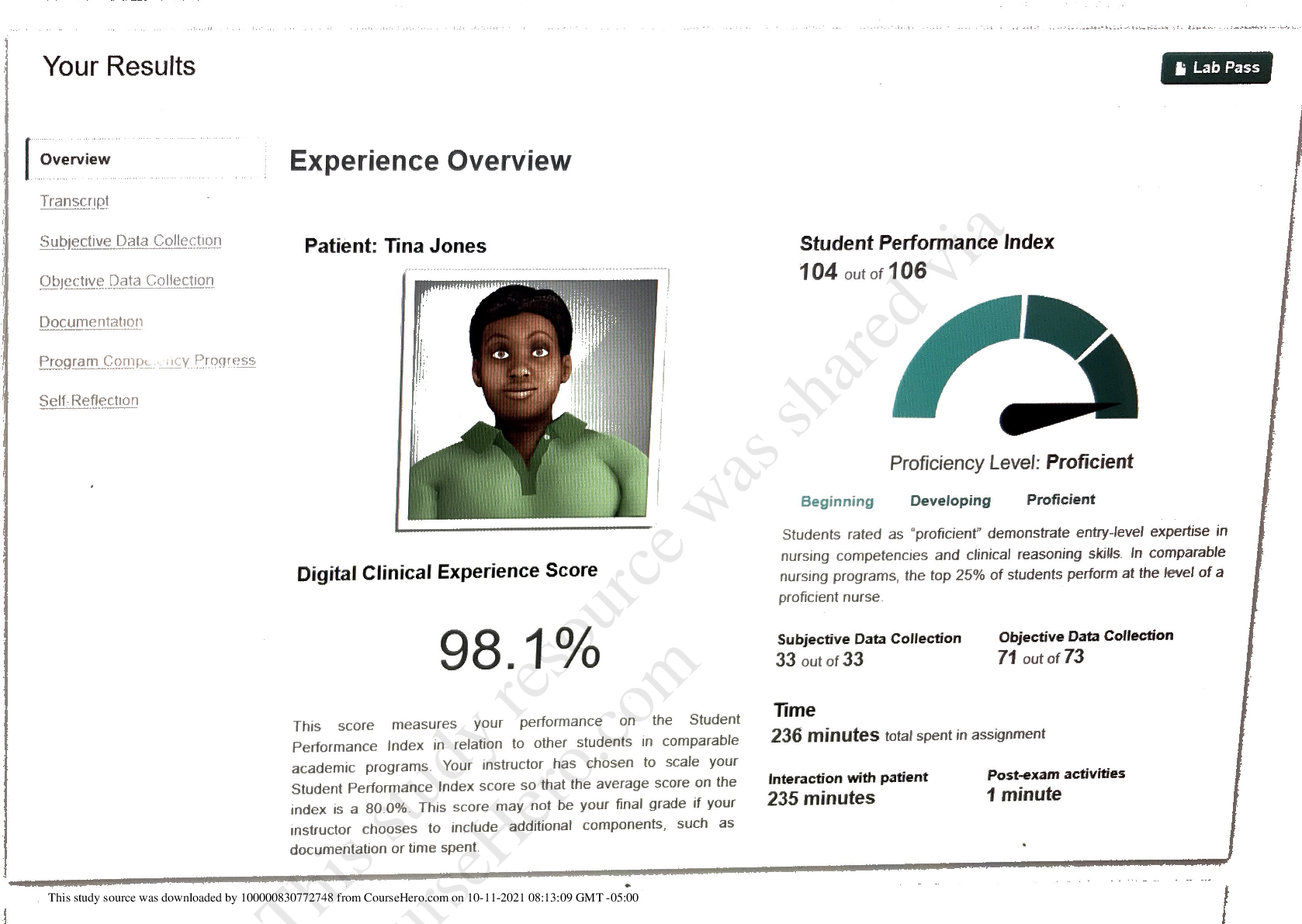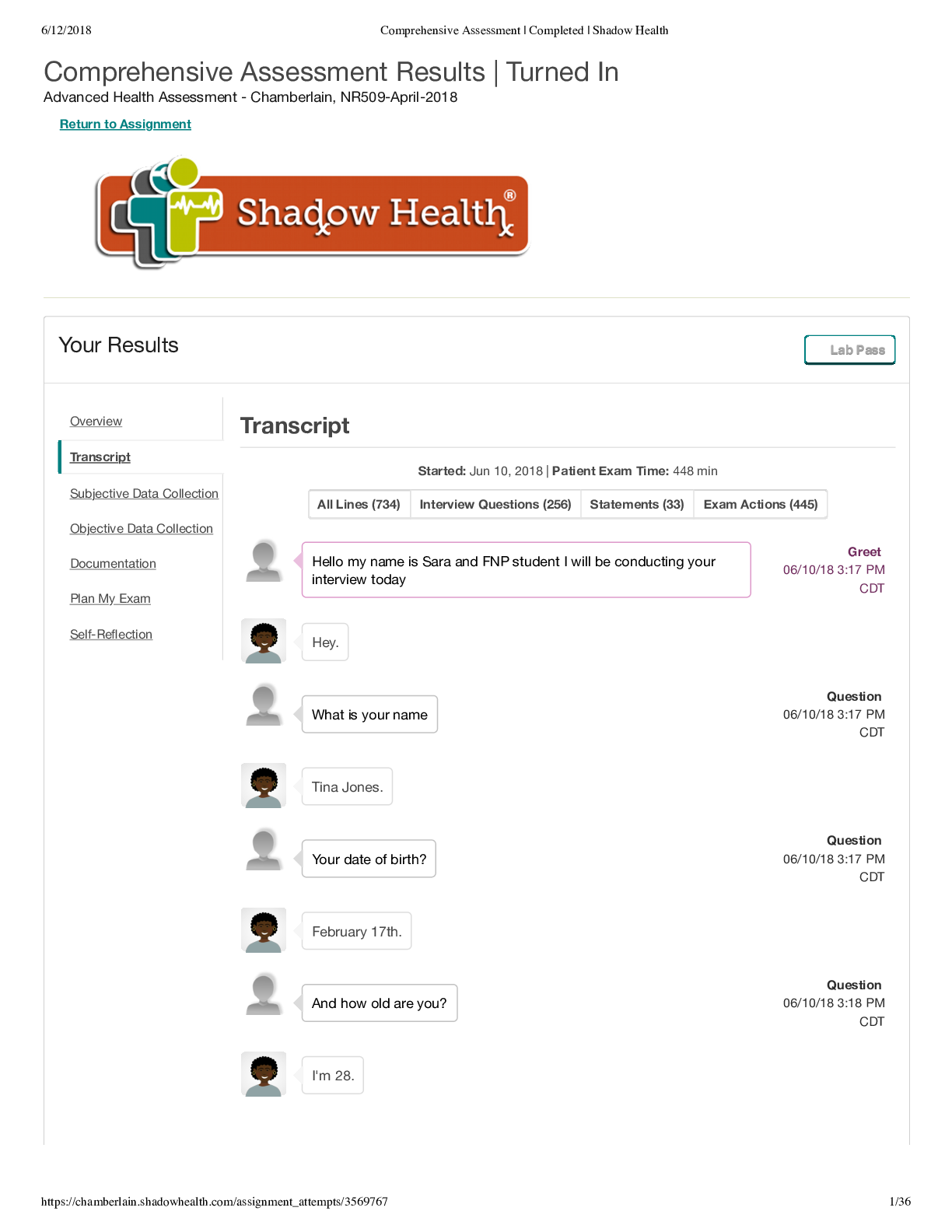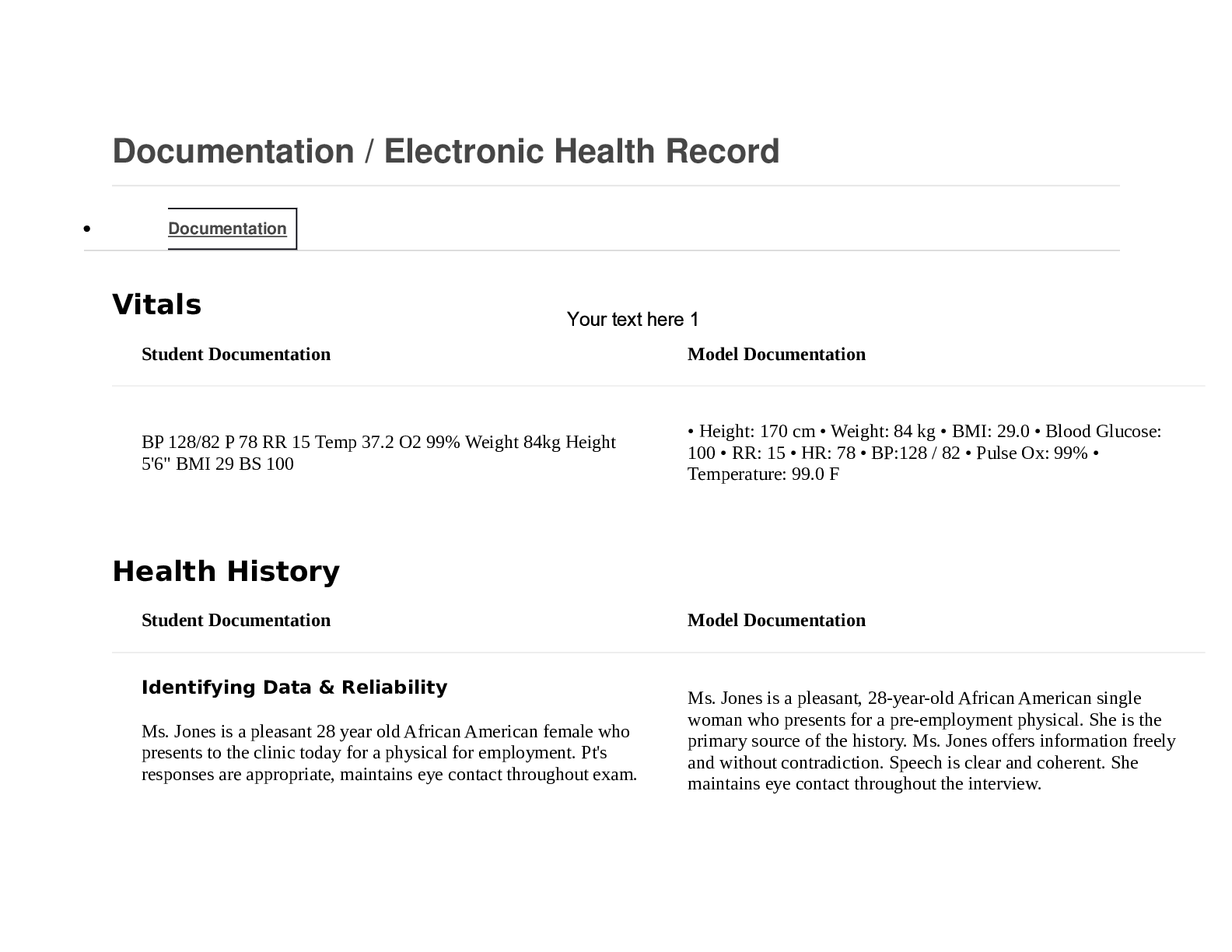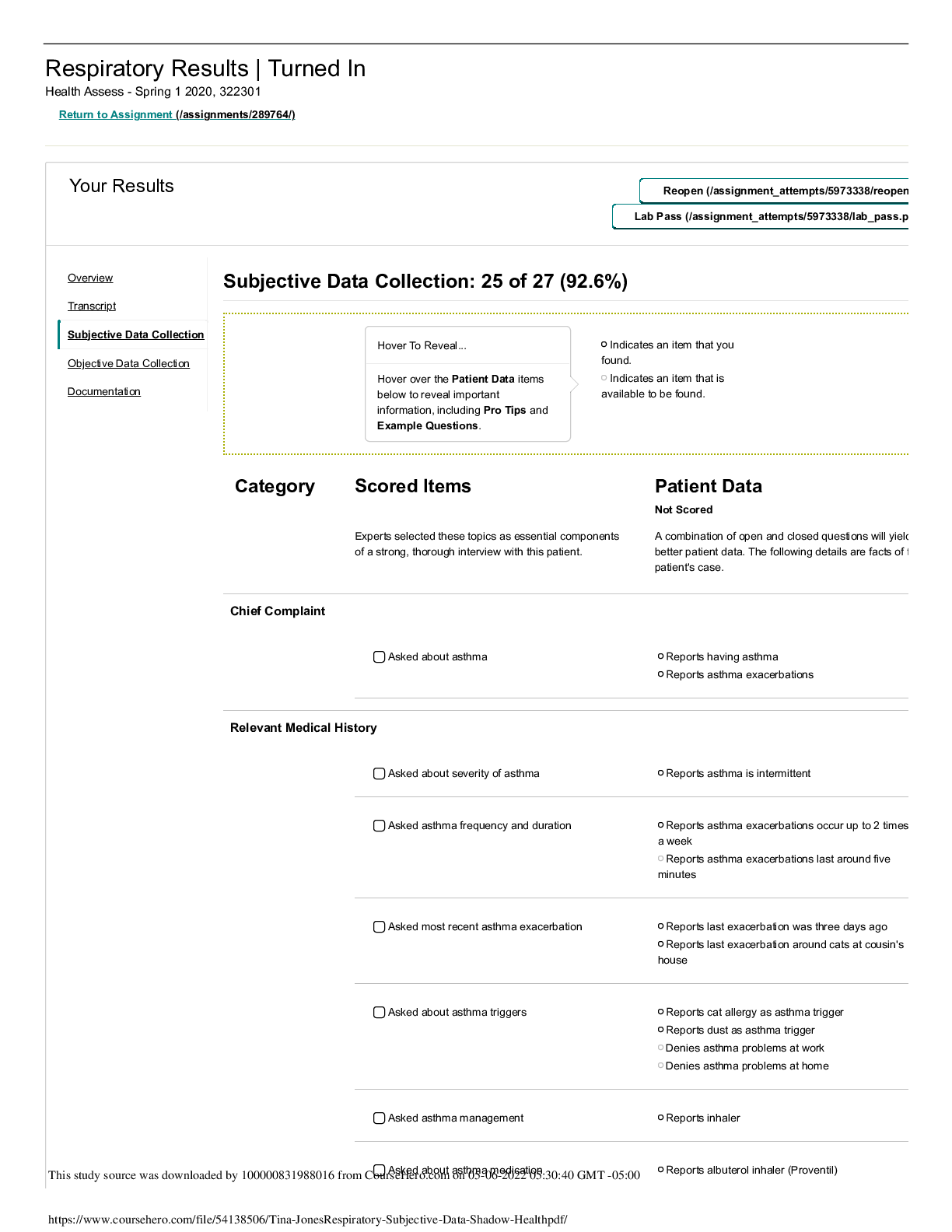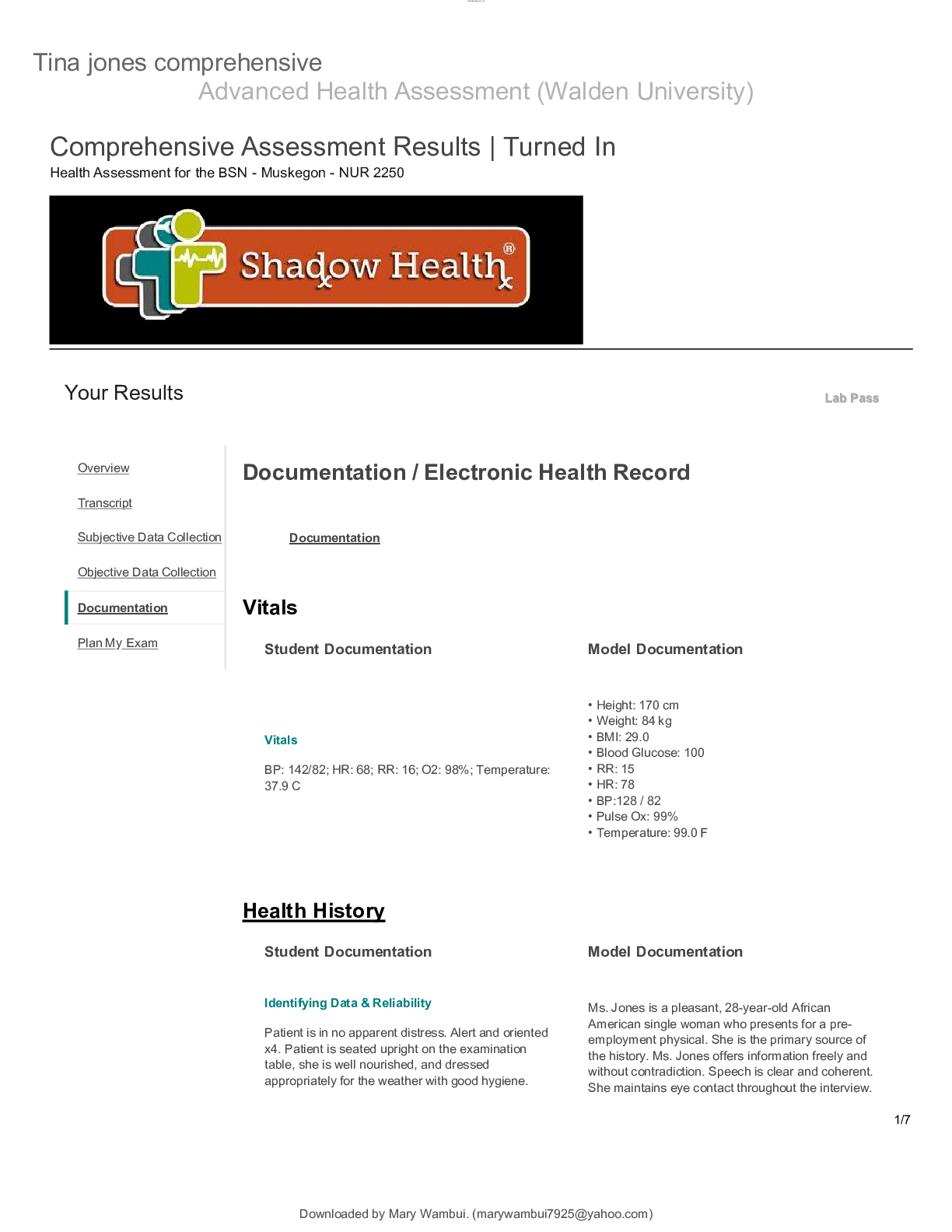*NURSING > SHADOW HEALTH > GastrointestinalTractDisordersofMotility[LATEST 2020\2021 GRADED A+] (All)
GastrointestinalTractDisordersofMotility[LATEST 2020\2021 GRADED A+]
Document Content and Description Below
GASTROINTESTINAL TRACT: DISORDERS OF MOTILITY 2 Gastrointestinal Tract: Disorders of Motility Several diseases can affect the digestive tract, beginning with the esophagus then traveling to the col... on and rectum. The gastrointestinal tract (GI) consists of the esophagus, stomach, small intestine, large intestine, anorectum and pelvic floor. Each has a distinct function to perform in the digestive process. Gastrointestinal (GI) motility is defined by the movements of the digestive system, and the transit of the contents within it (International Foundation for Functional Gastrointestinal Disorders [IFFGD], 2016). A person will develop symptoms of motility problems when the nerves or muscles in any part of the digestive tract do not work with traditional strength and coordination. The purpose of this paper is to discuss the common pathophysiology of gastric acid stimulation and production. The factor of behavior and how it impacts the pathophysiology of GERD, PUD, and gastritis in conjunction with diagnosis and treatment. The stomach is responsible for preparing food for digestion and intestinal absorption. The production of acid is the primary contribution by the stomach in the process of digestion. Acid bathes the food bolus while stored in the stomach, facilitating digestion (Ramsey & Carr, 2011). To avoid ulceration, the mucosa must be protected from the stomach acid. The acid also suppresses bacteria multiplication which prevents the overgrowth of intestinal bacteria. The production, stimulation, and regulation of gastric acid and pepsin show a balance of chemo transmitters (Adelman & Lewis, 2012, p. 289). The stimulatory and inhibitory mechanisms are linked by the chemo transmitters. Acid Production and Stimulation Changes with GERD, PUD, and Gastric Disorders Reflux is a term used to describe gastroesophageal reflux disease (GERD). While referring to reflux, the television commercial comes to mind. The one with the real handsome https://www.coursehero.com/file/18086440/GastrointestinalTractDisordersofMotility/ This study resource was shared via CourseHero.com GASTROINTESTINAL TRACT: DISORDERS OF MOTILITY 3 fireman, who arrives to save the day. The ring of muscle between the esophagus and the stomach is called the lower esophageal sphincter (LES). GERD affects the LES. Normally, the LES opens to allow food to pass into the stomach and then will close to prevent food and gastric juices from returning to the esophagus. Reflux occurs when the LES is weak. If the LES can not or does not close appropriately, gastric contents will back up into the esophagus. The degree of severity is dependent on the type and amount of fluid brought up from the stomach. GERD is thought to have a multifactorial etiology rather than a single cause (Scott & Gelhot, 1999). This chronic, relapsing condition affects the quality of life. Factors that contribute to GERD include caustic materials that are refluxed, a breakdown in the defense mechanisms of the esophagus and a functional abnormality that results in reflux (Orlando, 2007). Patient education regarding dietary lifestyle changes, smoking cessation, and alcohol avoidance, can improve GERD symptoms. These necessary lifestyle changes also have added benefits of improving cardiopulmonary state and reduce certain types of cancers. Peptic Ulcer Disease (PUD) is a gastrointestinal issue characterized by mucosal damage related to pepsin and gastric acid secretion. The offending agent is that of Helicobacter pylori ( H. pylori) and the overuse of nonsteroidal anti-inflammatory drugs (NSAIDS). PUD can either be chronic or acute and they include those with excessive secretion of acid and the transferable ulcers etiology (Schubert & Peura, 2015). Gastric and duodenal ulcers are breaks in the gastric and duodenal mucosa. These breaks are a direct reflection of the corrosive nature of pepsin, and hydrochloric acid. A classic presentation consists of abdominal discomfort, epigastric pain, and nausea. A burning sensation that waxes and wanes. Although mortality rates from peptic ulcer disease are low, the high prevalence and the resulting pain, suffering, and expense are very costly (Malfertheiner & Chan, 2009). The types of ulcers will depend on location, duodenal, gastric, or https://www.coursehero.com/file/18086440/GastrointestinalTractDisordersofMotility/ This study resource was shared via CourseHero.com GASTROINTESTINAL TRACT: DISORDERS OF MOTILITY 4 esophageal. Stomach acids are potent and can cause irritation on an empty stomach. Inflammatory responses to damaged area produce inflammatory mediators which cause pain. Since H. pylori is a common cause, eradication is necessary. Patient education will include the avoidance of the use of NSAIDs, and alcohol. Smoking cessation is a must and stress reduction is an important factor to control. Emotional and psychological stress increases the production of gastric acids that enhances the risk for the development of ulcers (Brooks, 2007). Gastritis is another common problem associated with the GI tract. Gastritis is an inflammatory disorder of the gastric mucosa (Huether & McCance, 2012). This occurrence can either be acute or chronic in nature. The result of constant erosion is due to the compromise of the protective mucosal barrier. NSAIDs are the usual culprit in this case. This drug class inhibits the action of cyclooxygenase-1(COX-1) cause gastritis.perhaps because they inhibit prostaglandins, which normally stimulate the secretion of mucus (Huether & McCance, 2012). Gender as a Factor in the Pathophysiology of GERD, PUD, and Gastritis GERD There does appear to be a trend toward a higher frequency and slightly increased severity of symptoms in women, although the clinical importance of these differences in unclear (Katz & Lehrer, 2006). Some clinicians suggest that differences may lie in symptomology and the pattern of healthcare-seeking behavior between the sexes. In the study by Lin, significantly more men (23%) than women (14%) with GERD had Barrett’s esophagus (Lin, 2004). The reasons for this are unclear. Pregnancy will increase the incidence of heartburn, this may account for the slight difference in rate. Overall, GERD is a common phenomenon in both men and women. PUD https://www.coursehero.com/file/18086440/GastrointestinalTractDisordersofMotility/ This study resource was shared via CourseHero.com GASTROINTESTINAL TRACT: DISORDERS OF MOTILITY 5 H. pylori have been identified as the primary cause of peptic ulcer disease. The incidence is declining with the treatment and eradication of H.pylori and the increasing use of proton pump inhibitors. Comorbidity, age, and family history places an individual at risk for PUD. Gender does not play a significant role in this GI disease. Gastritis Chronic H. pylori-associated gastritis affects both sexes with approximately the same frequency, though some studies have noted a slight male predominance (Marcus & Anand, 2016). The male-to-female ratio for autoimmune gastritis has been reported to be 1:3 (Liu, Wong, & Cho, 2011). Once treatment has begun, gastritis improves quickly. There are predisposing and precipitating factors in the pathophysiology of gastritis. Factors that predispose patients to gastritis include dietary indiscretions, excessive alcohol intake, and consumption of high acid or alkali foods. Factors that influence patients include bile reflux, radiation therapy, and the overuse of aspirin and NSAIDs. Diagnosis and Treatment for GERD, PUD, and Gastritis in Gender GERD The primary diagnosis of GERD is made through a thorough evaluation of presenting symptoms. PH monitoring measures the amount of acid in the esophagus and this is helpful to rule out GERD. Endoscopy is utilized to visualize the esophagus for inflammation and strictures (Barrett’s esophagus). Manometry is a study that measures the function of the lower esophageal valve. The diagnosis of GERD is no different in men versus women. Treatment of GERD as a chronic condition is symptom management. Over the counter antacids in combination with lifestyle changes for mild GERD is recommended. H2 -blockers such as Pepcid, Tagamet, or Zantac help cut the stomach’s production of acid. Depending on the [Show More]
Last updated: 1 year ago
Preview 1 out of 8 pages
.png)
Reviews( 0 )
Document information
Connected school, study & course
About the document
Uploaded On
Mar 21, 2021
Number of pages
8
Written in
Additional information
This document has been written for:
Uploaded
Mar 21, 2021
Downloads
0
Views
37

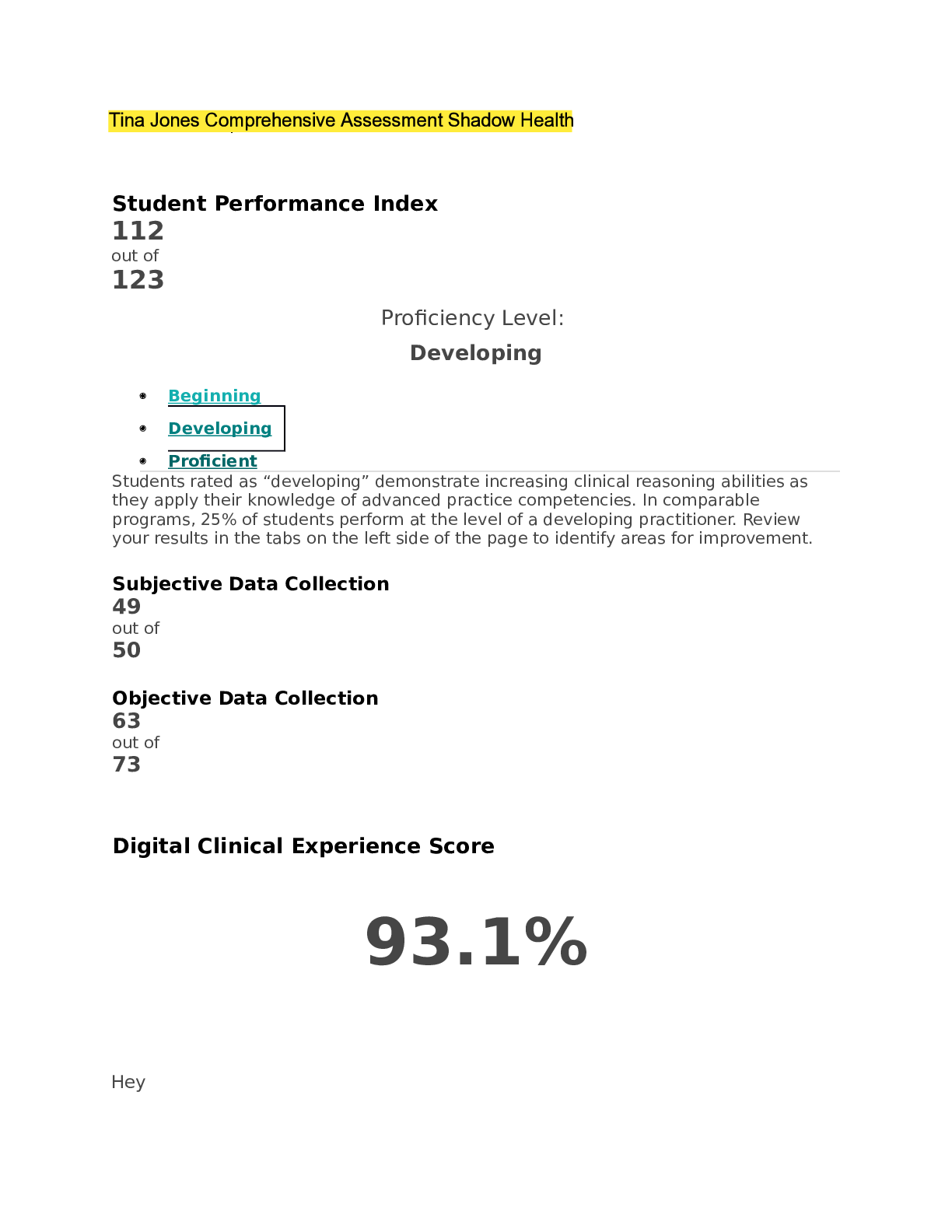
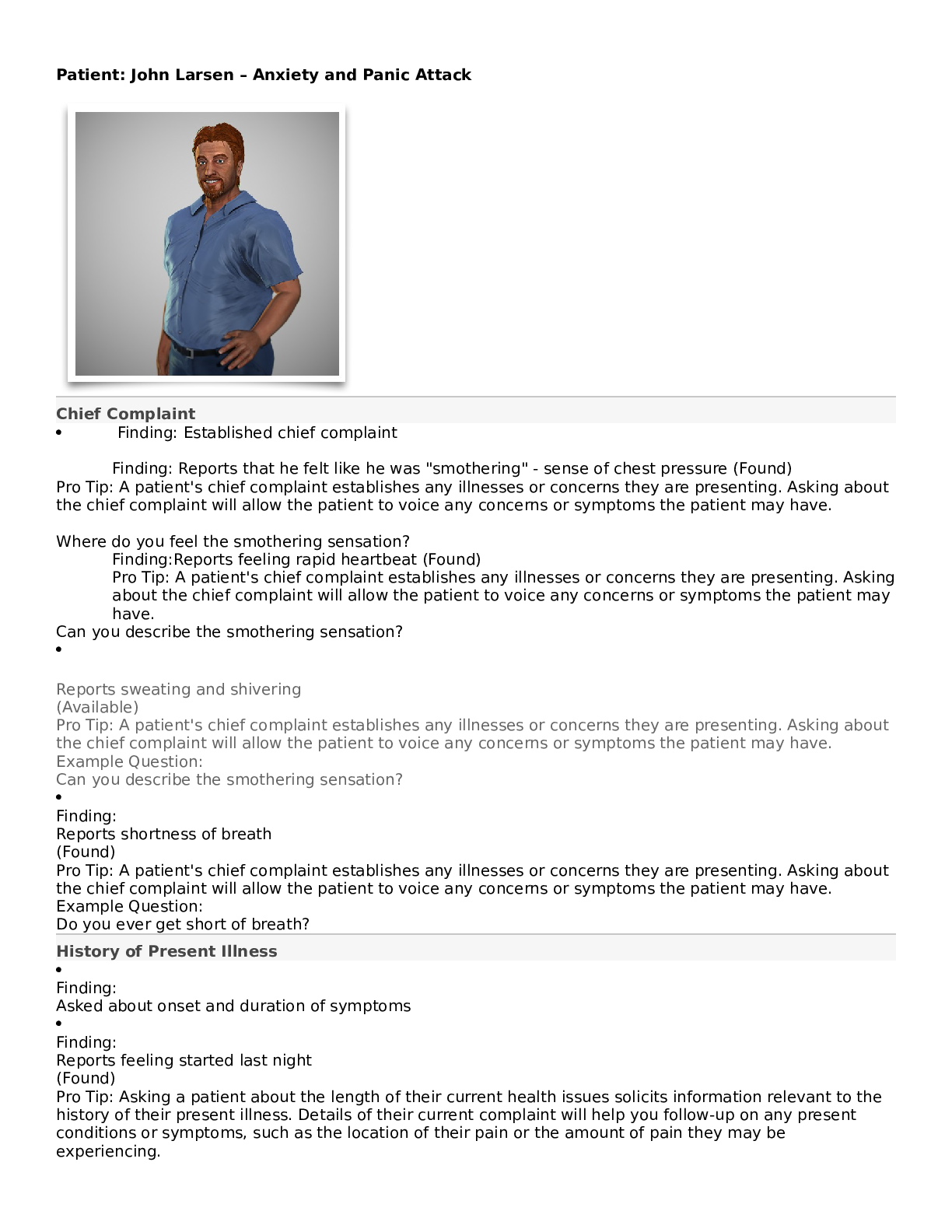
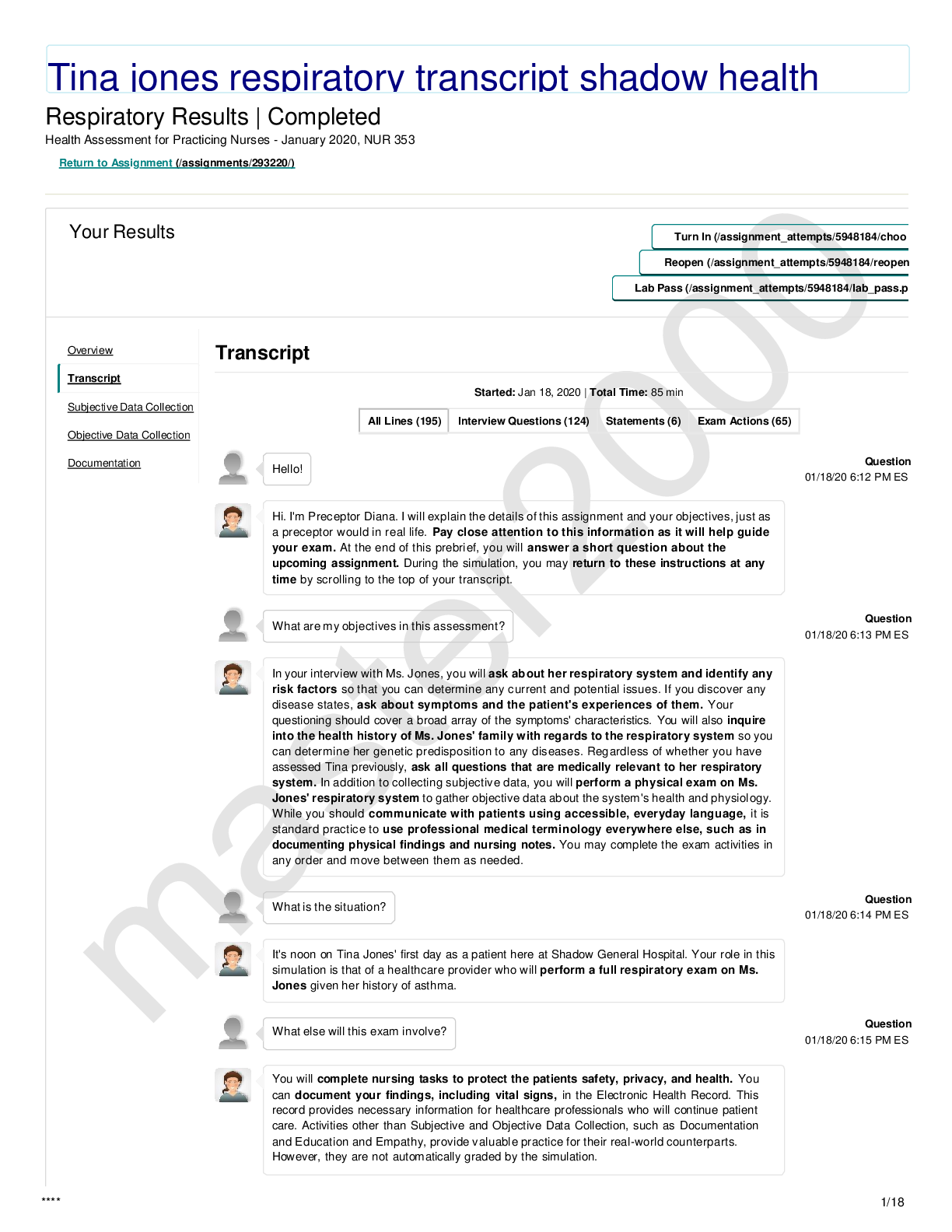
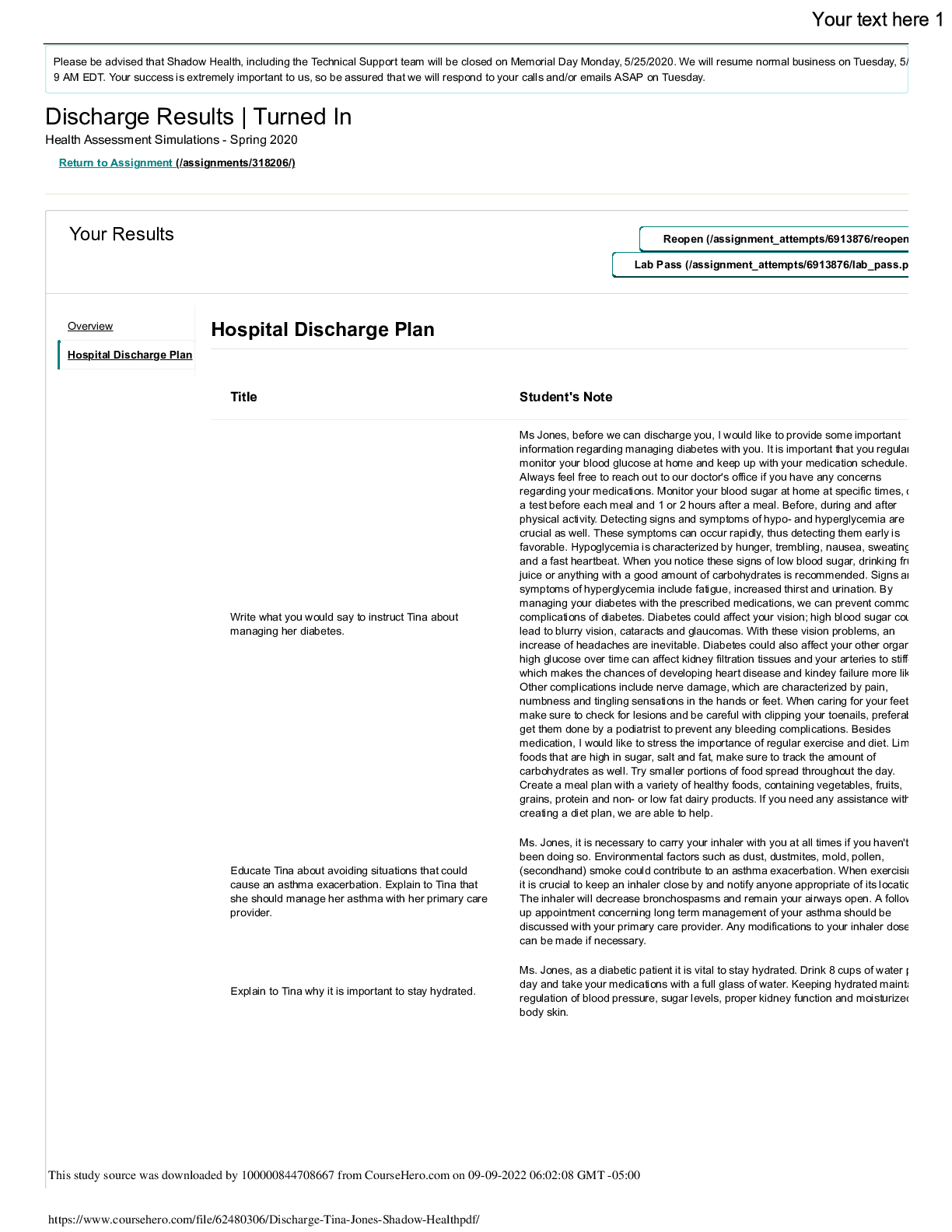
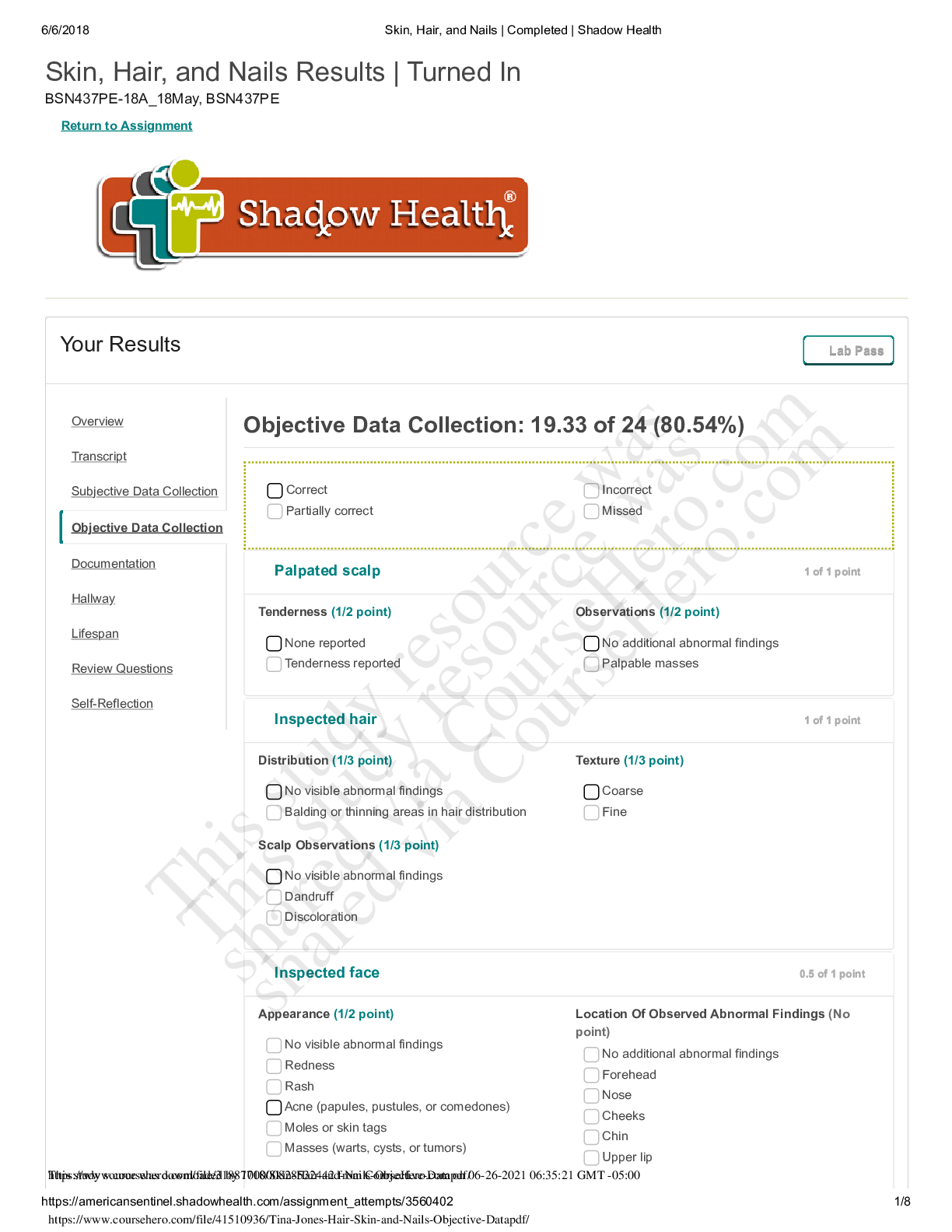
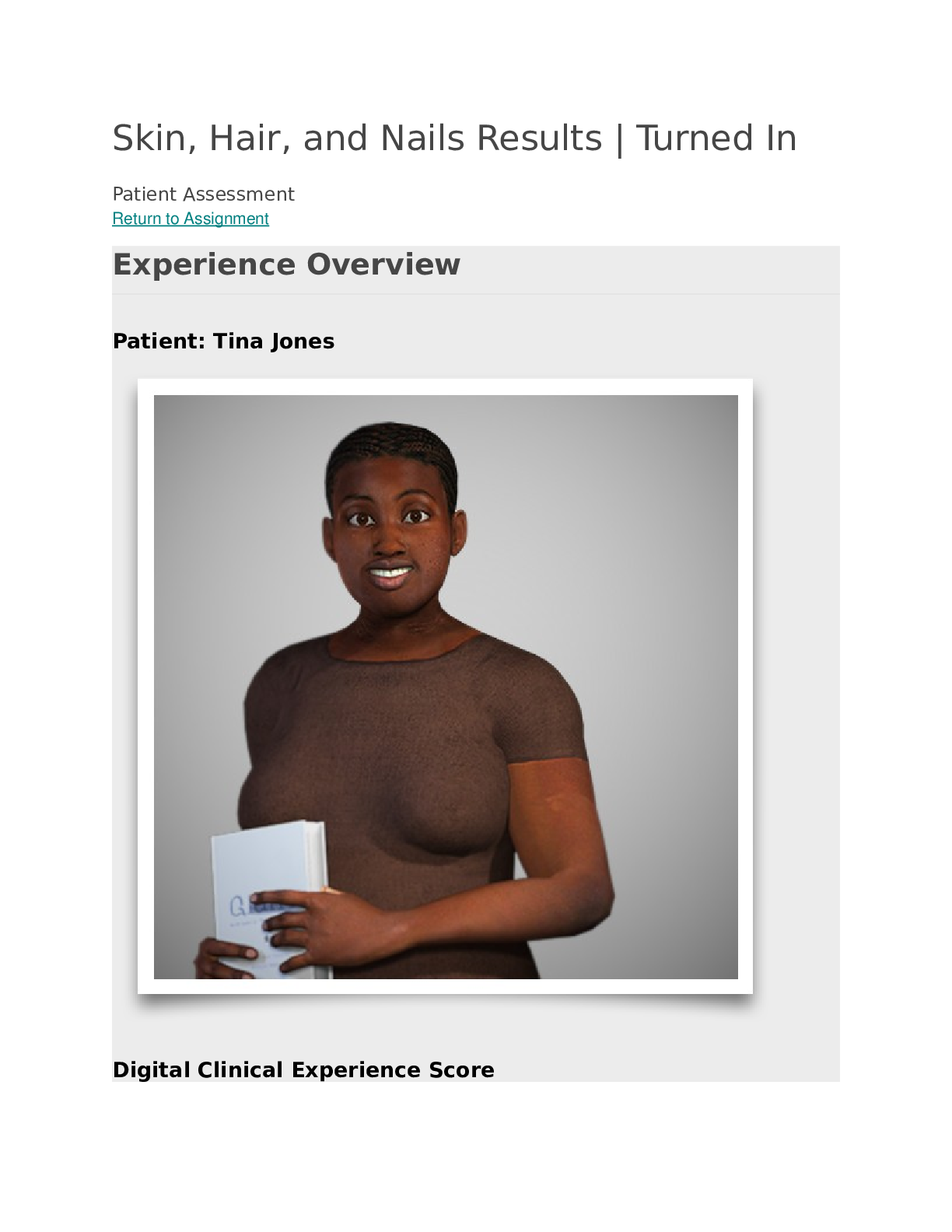
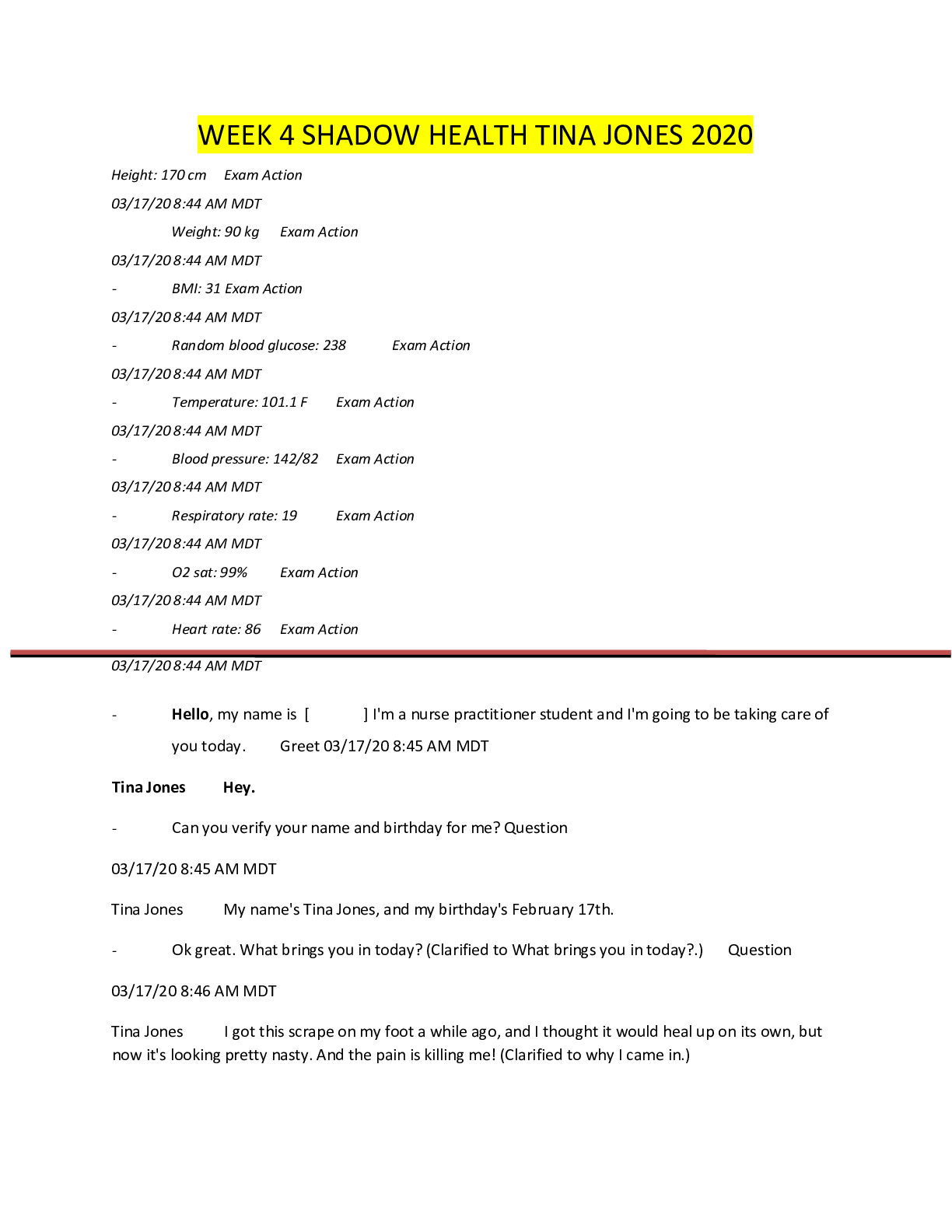
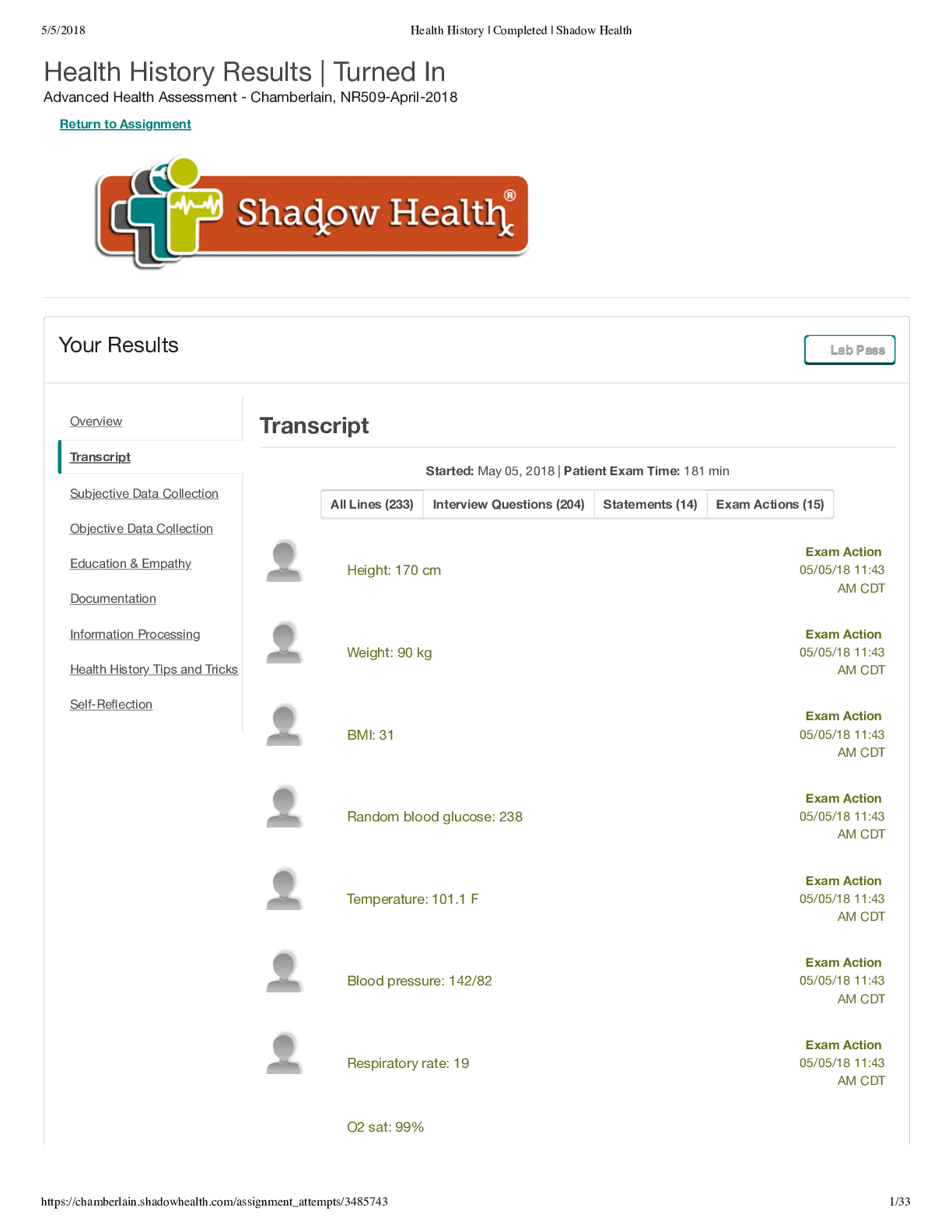
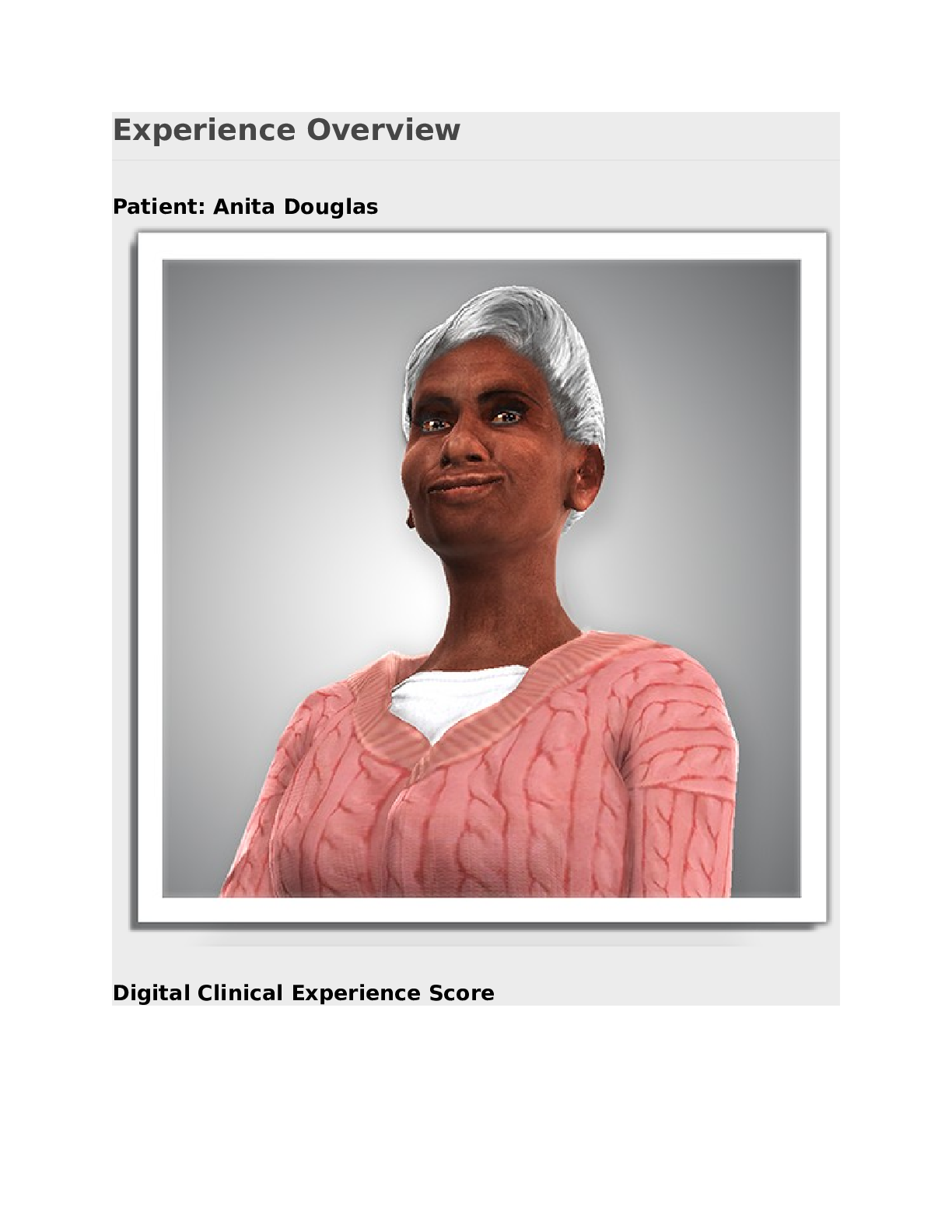
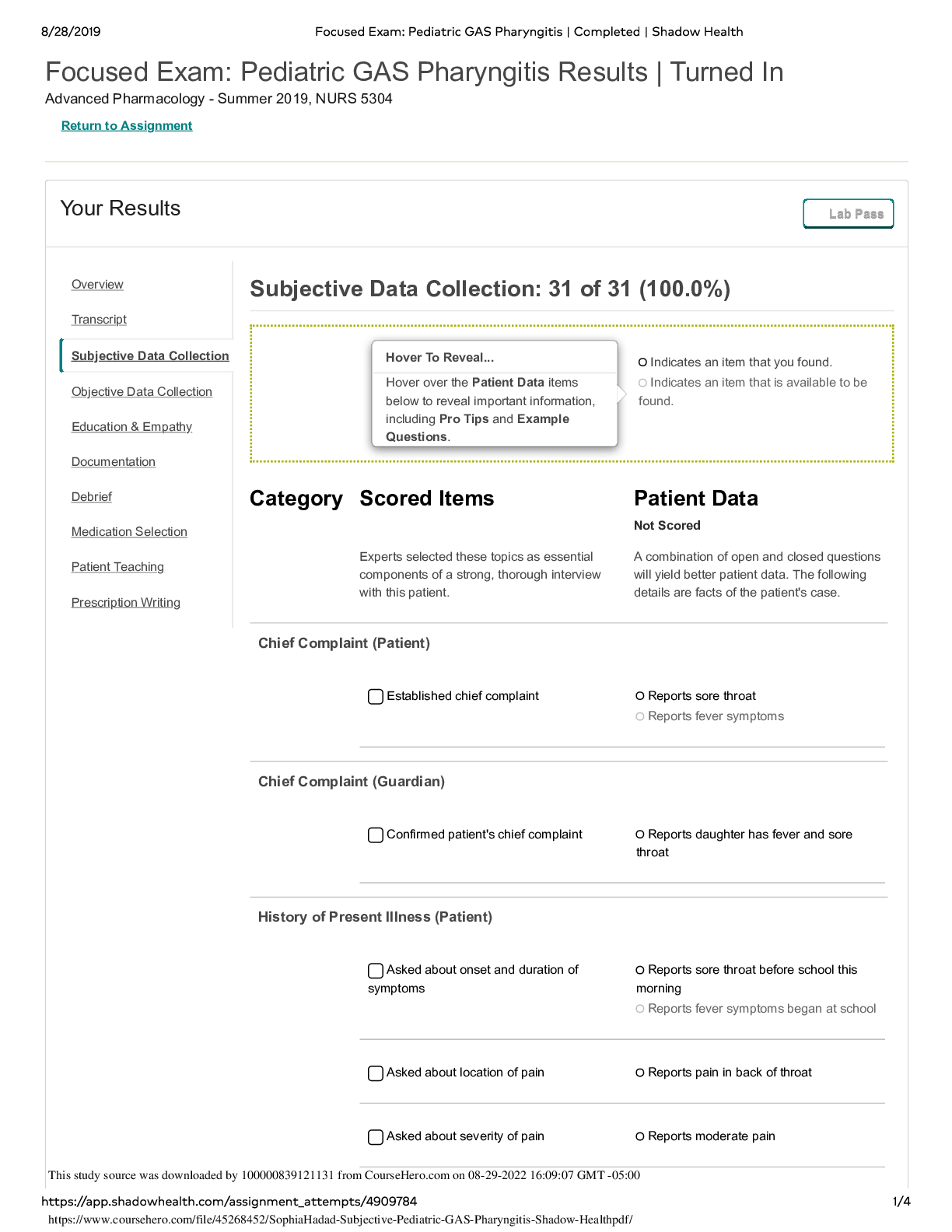
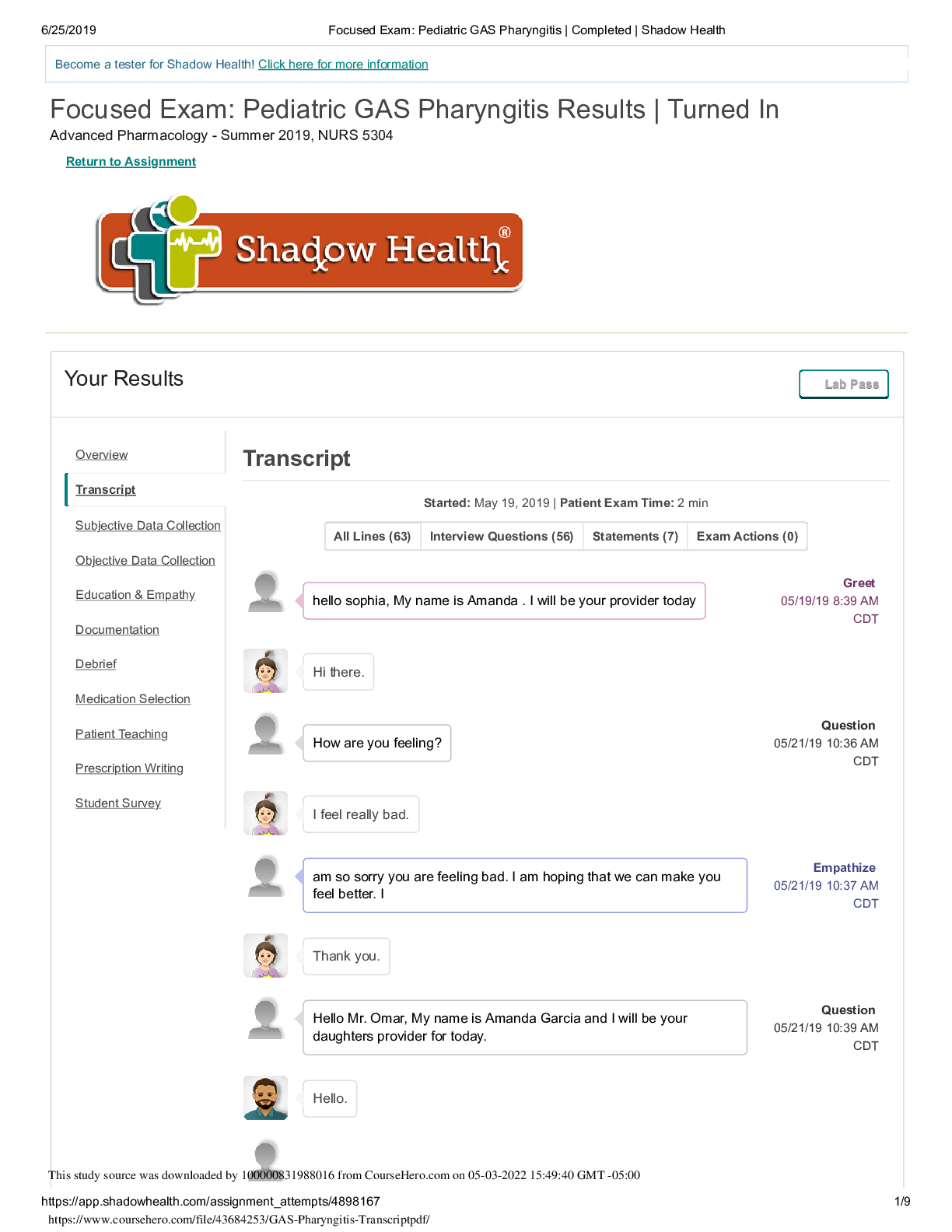

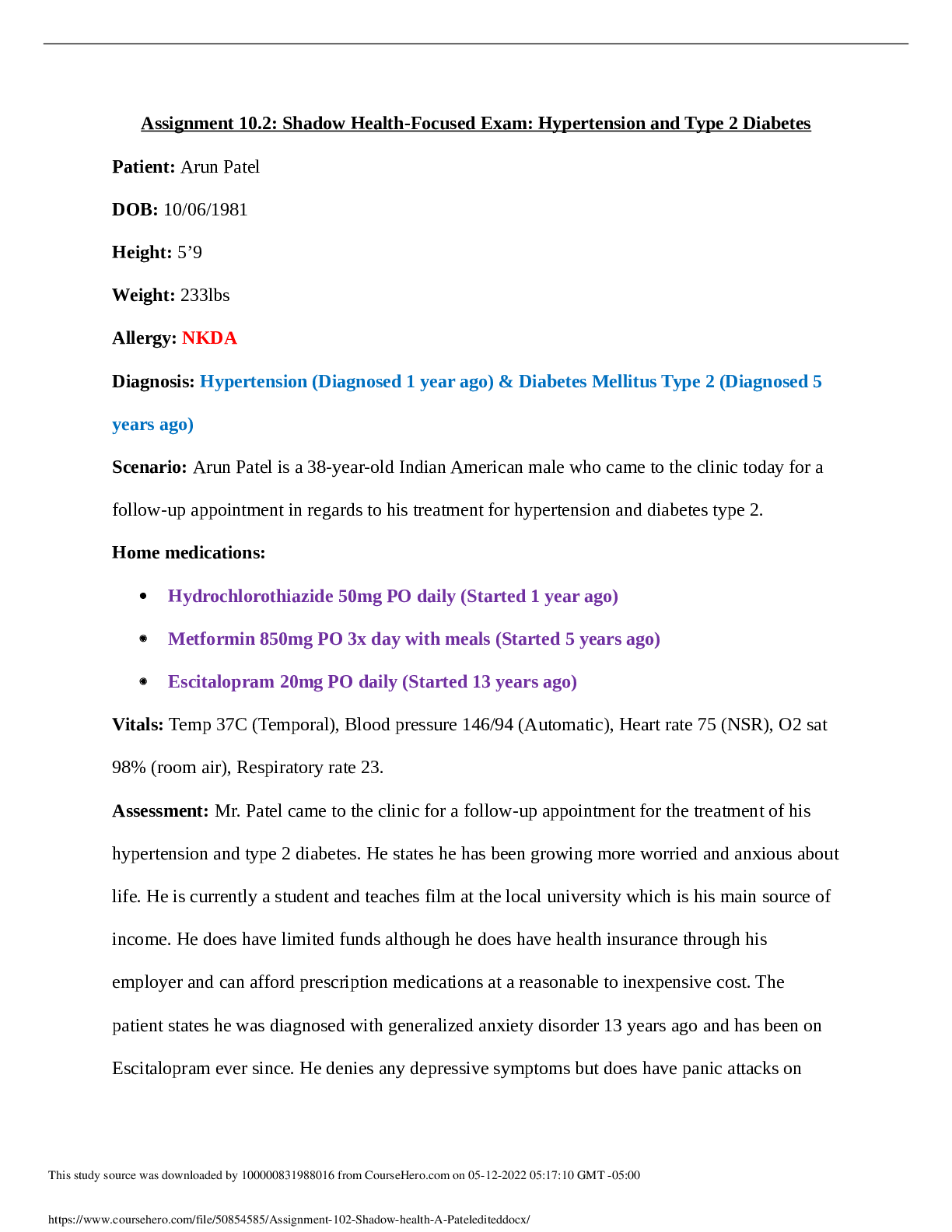
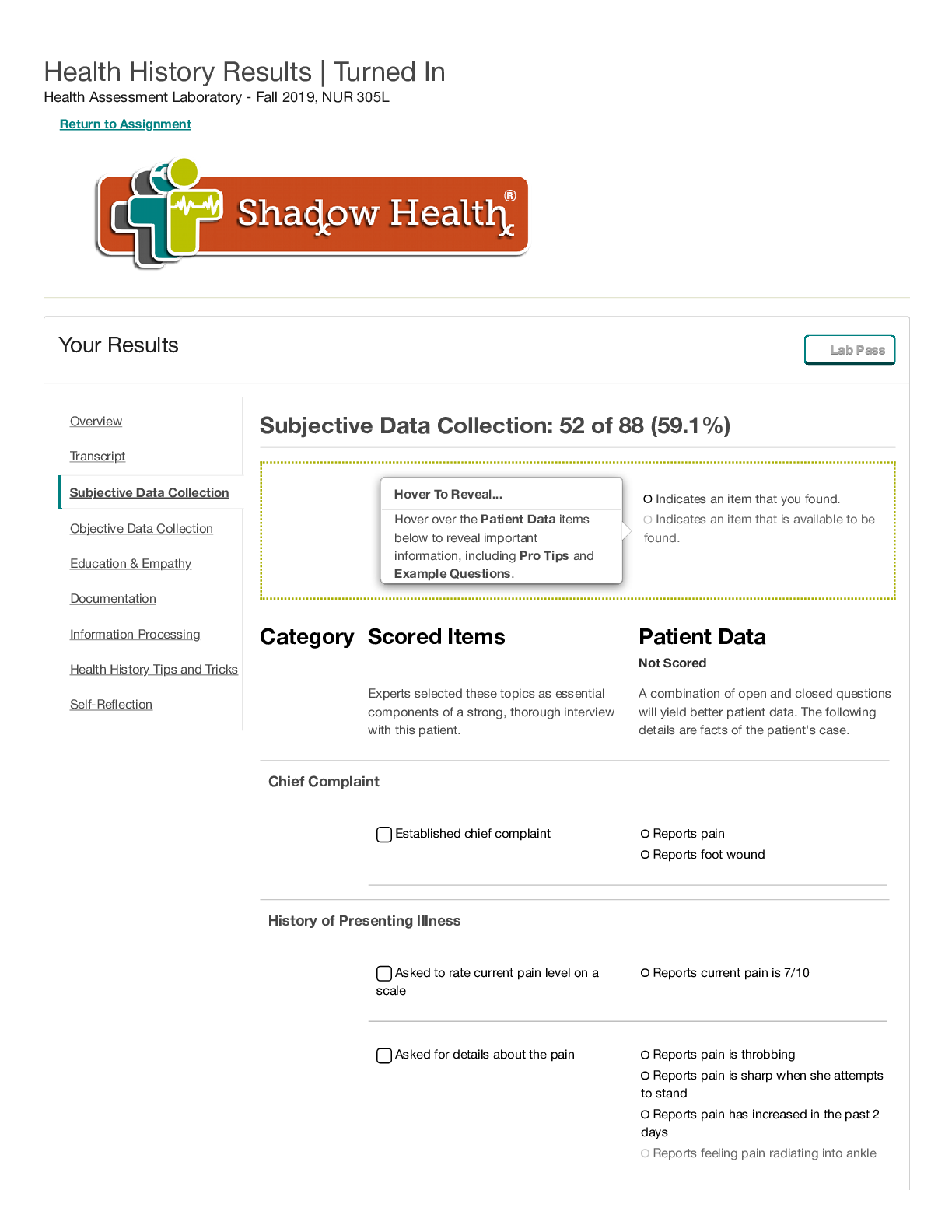
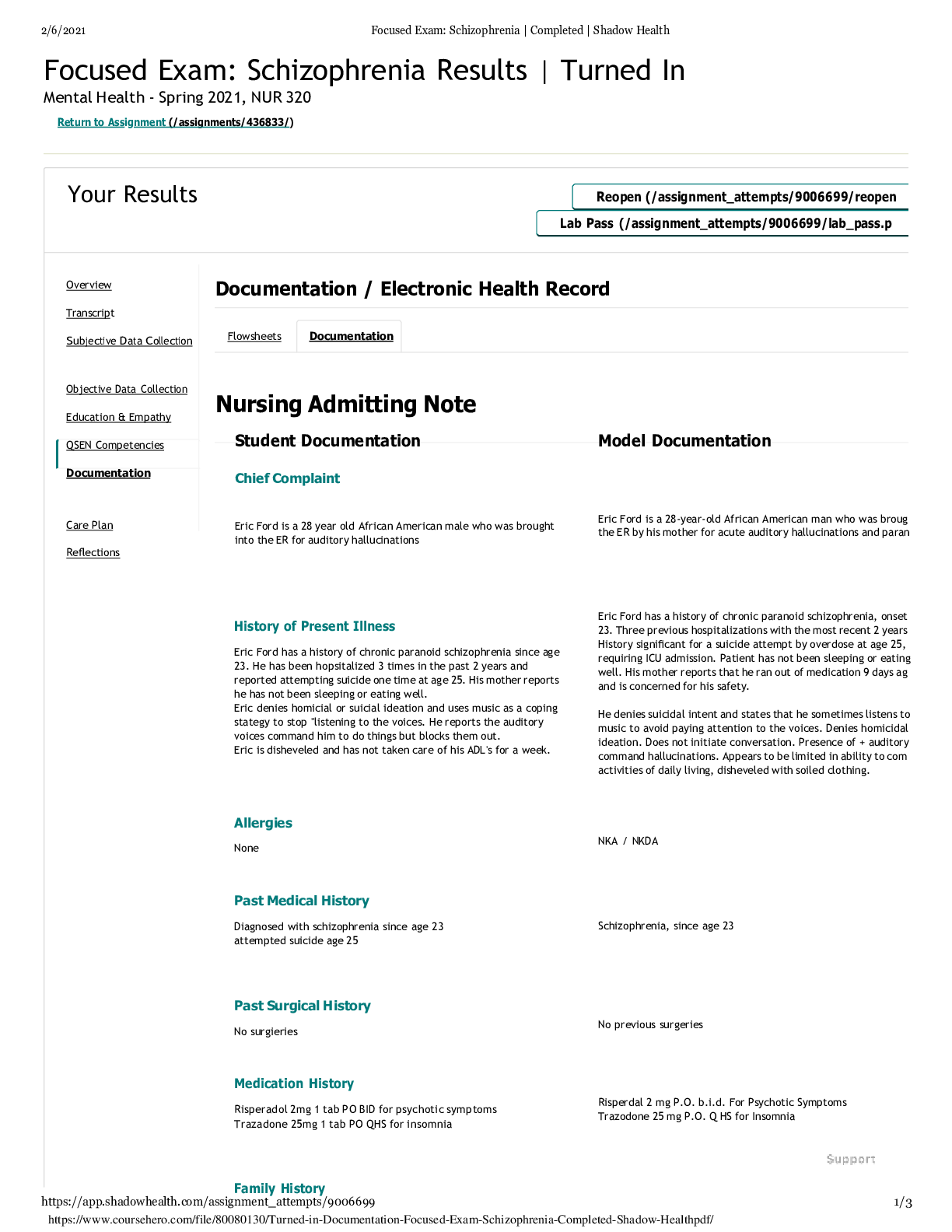
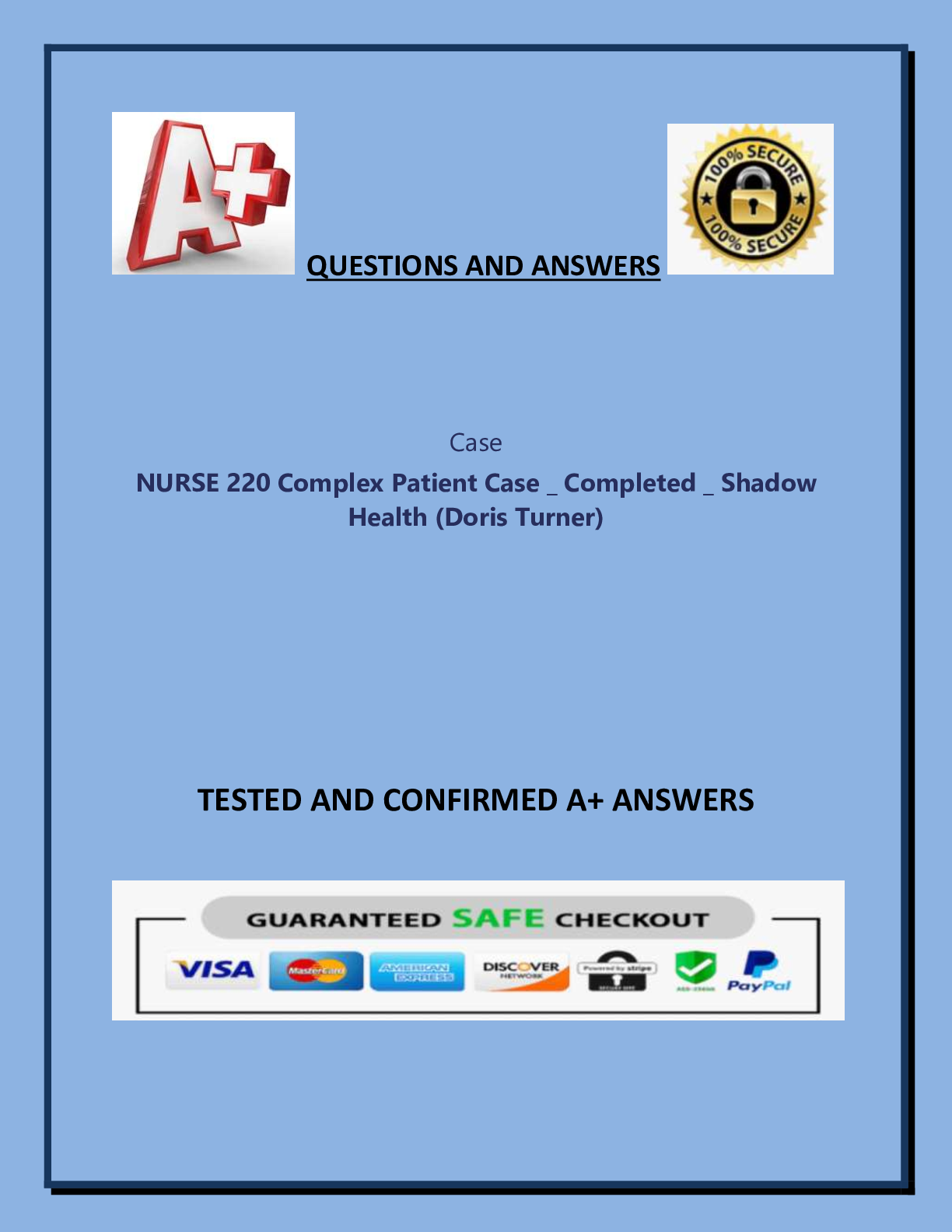
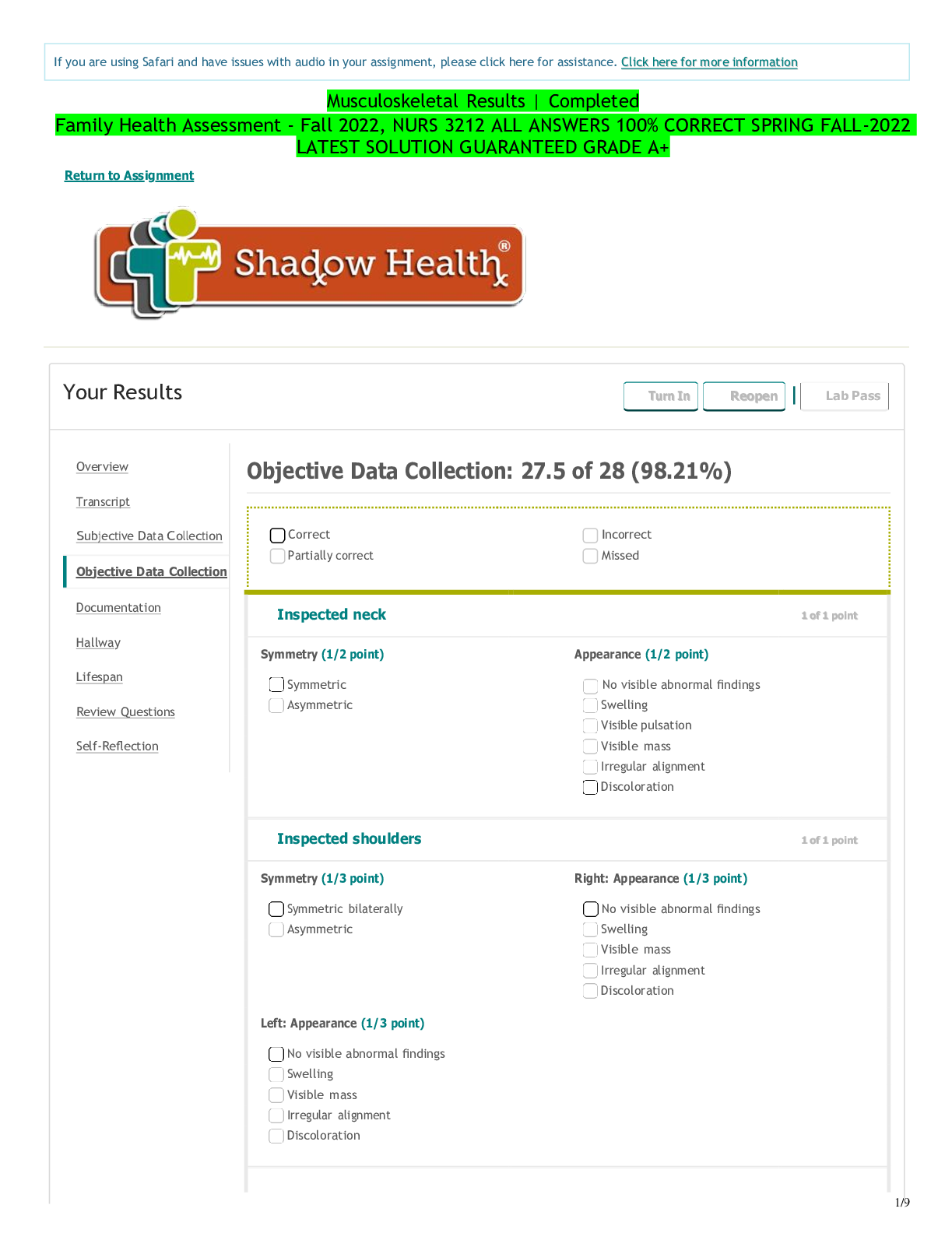
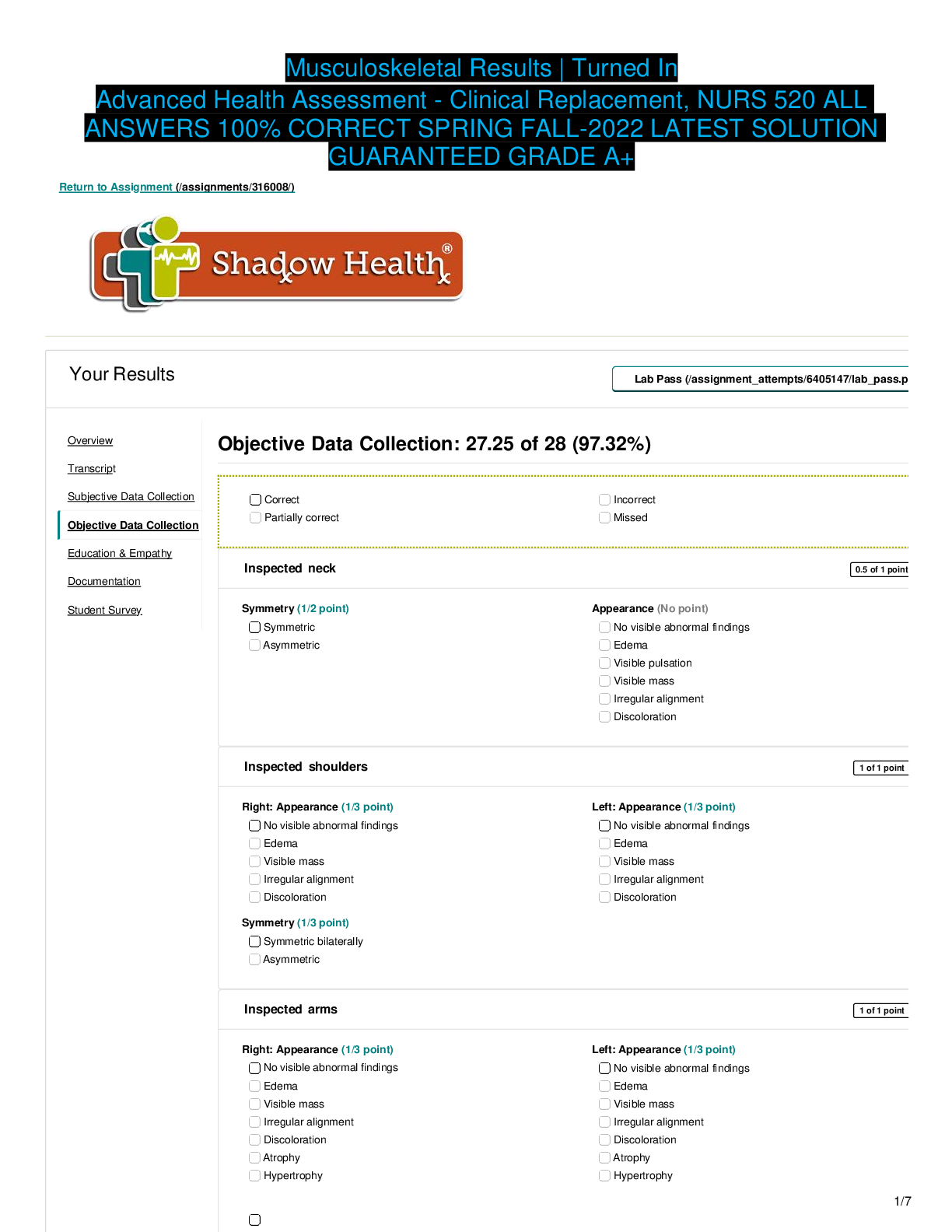
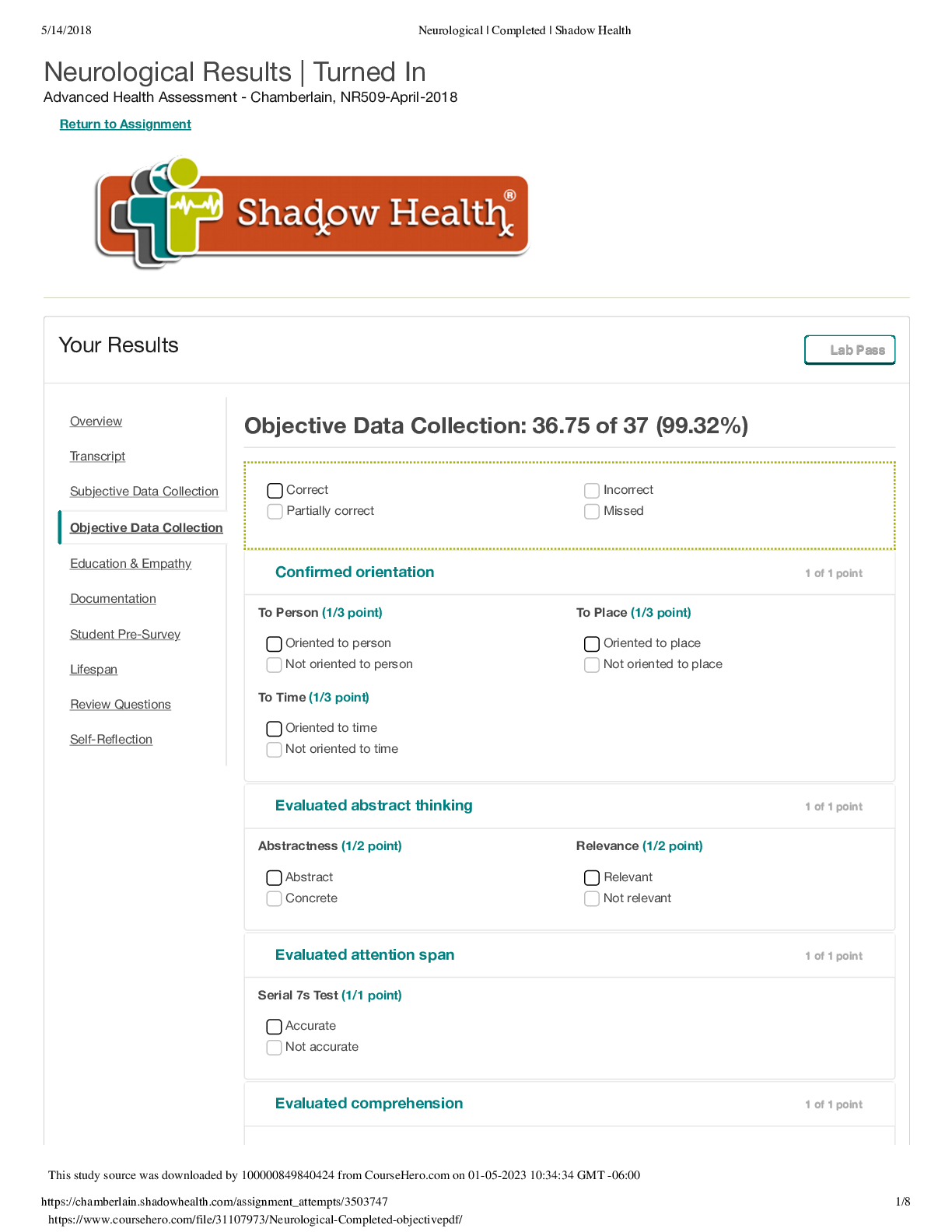
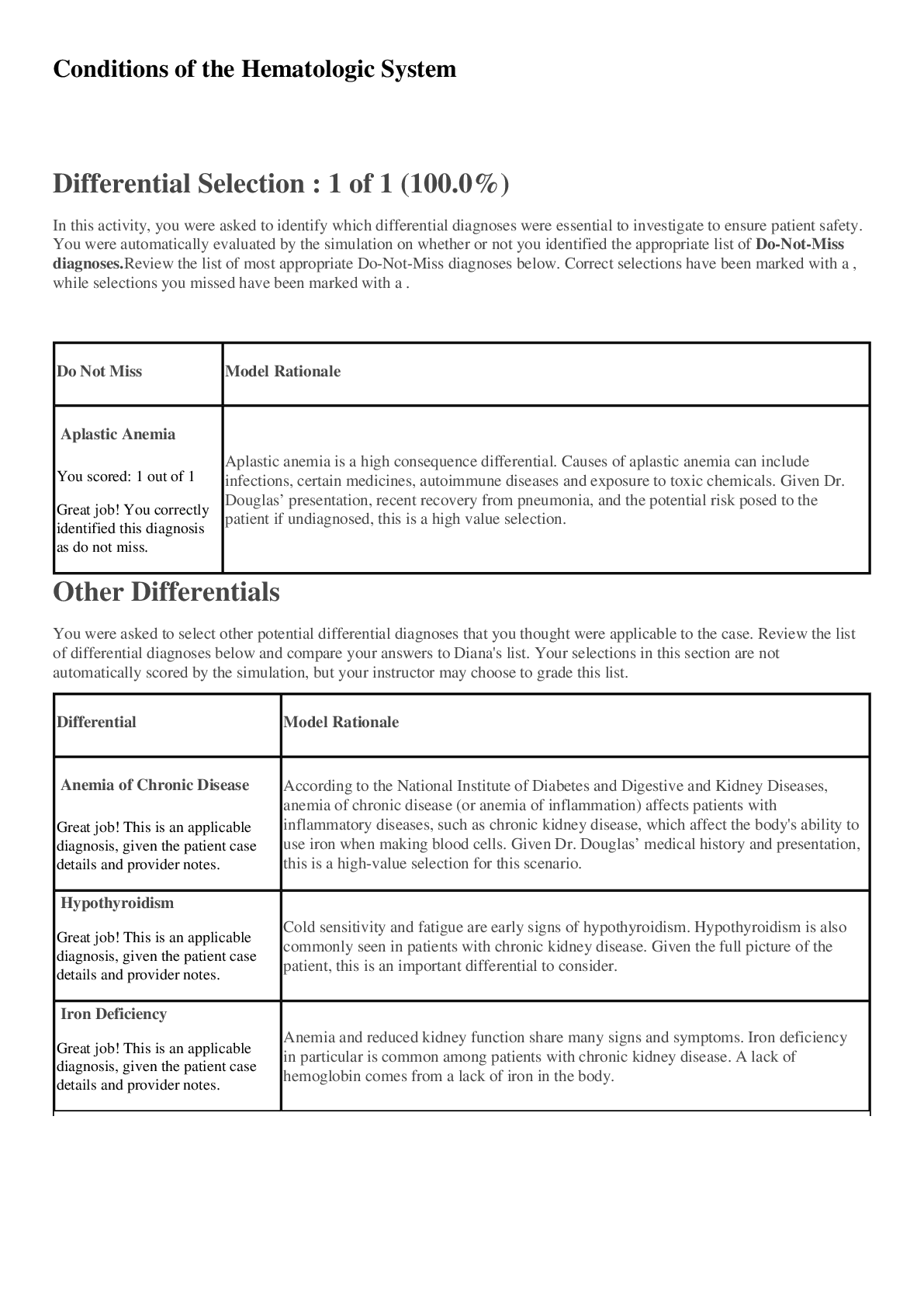
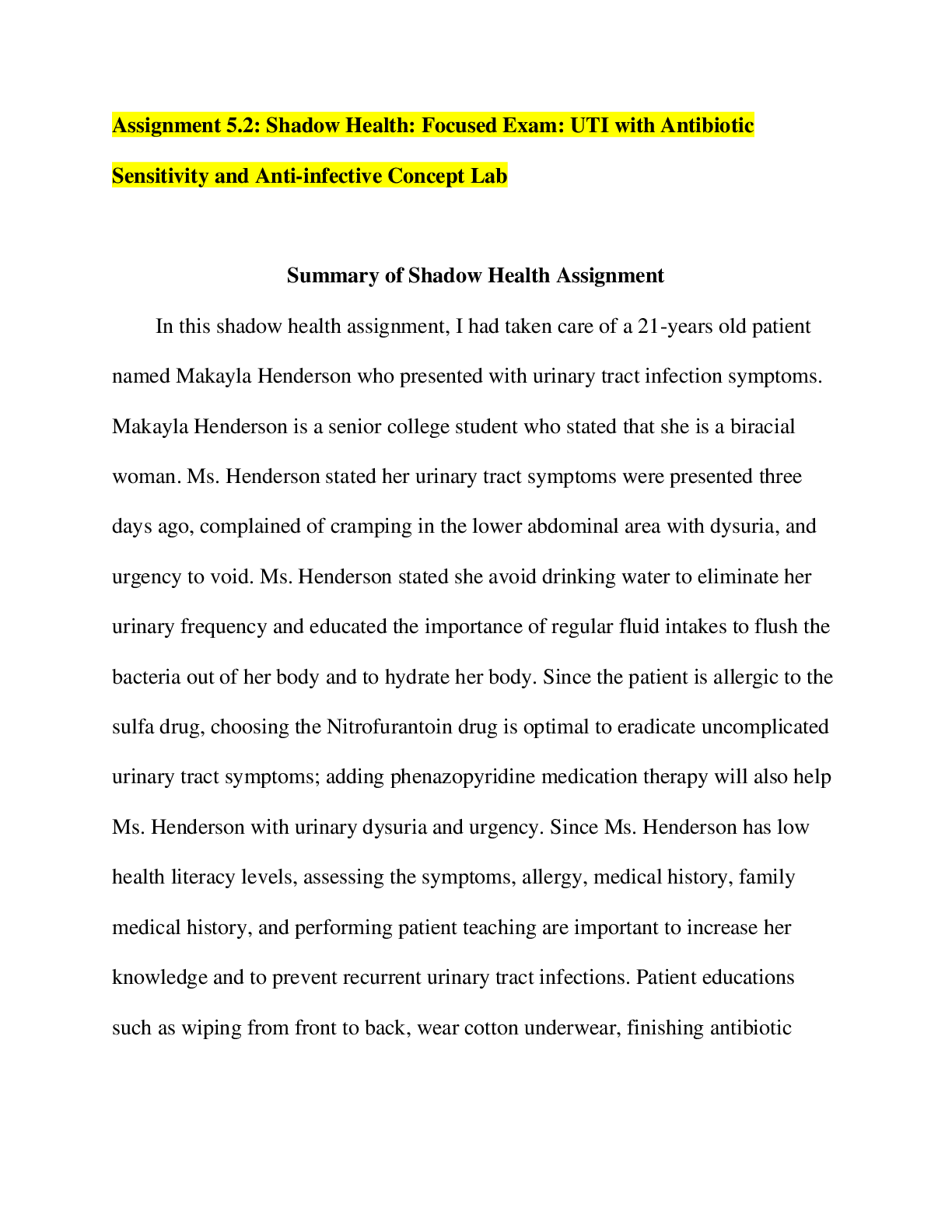
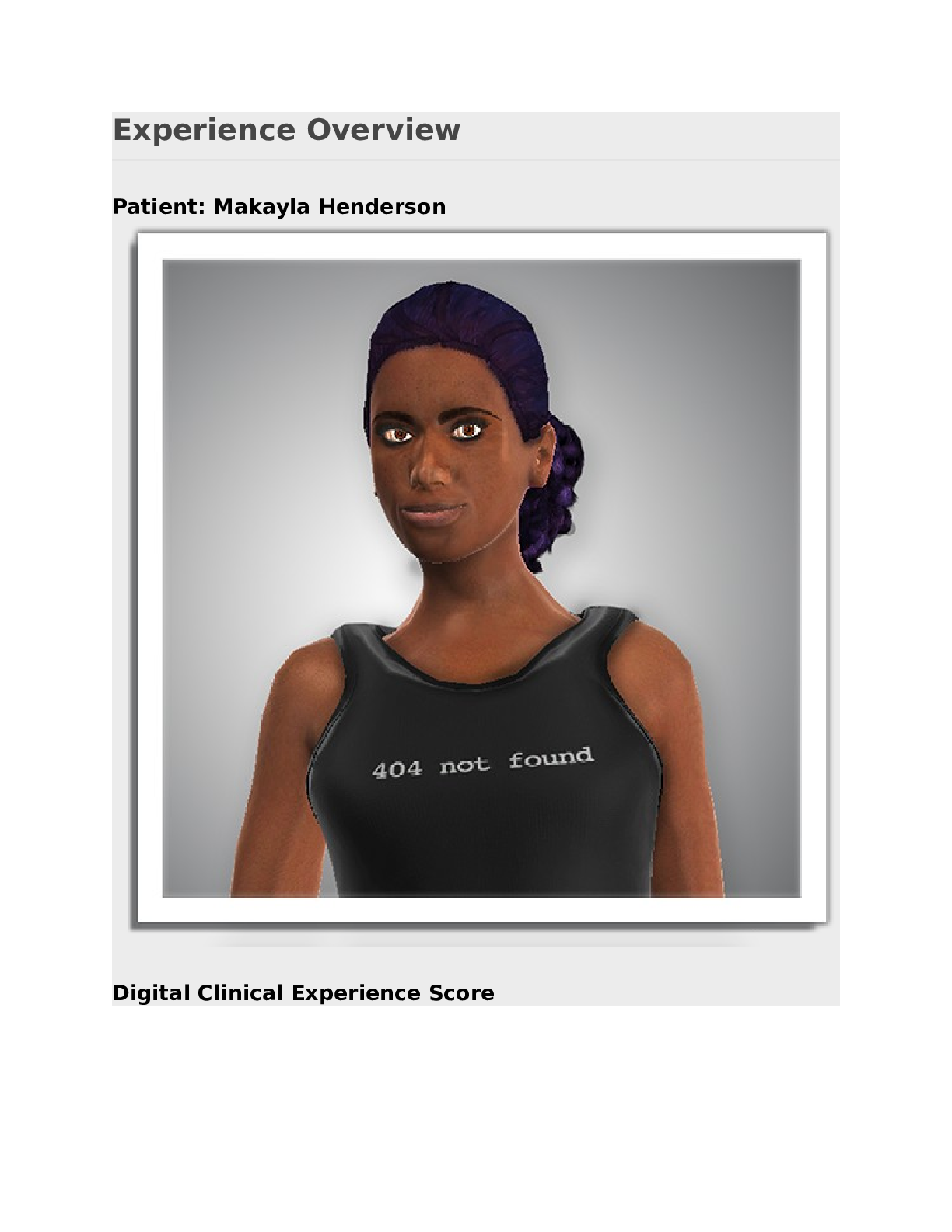

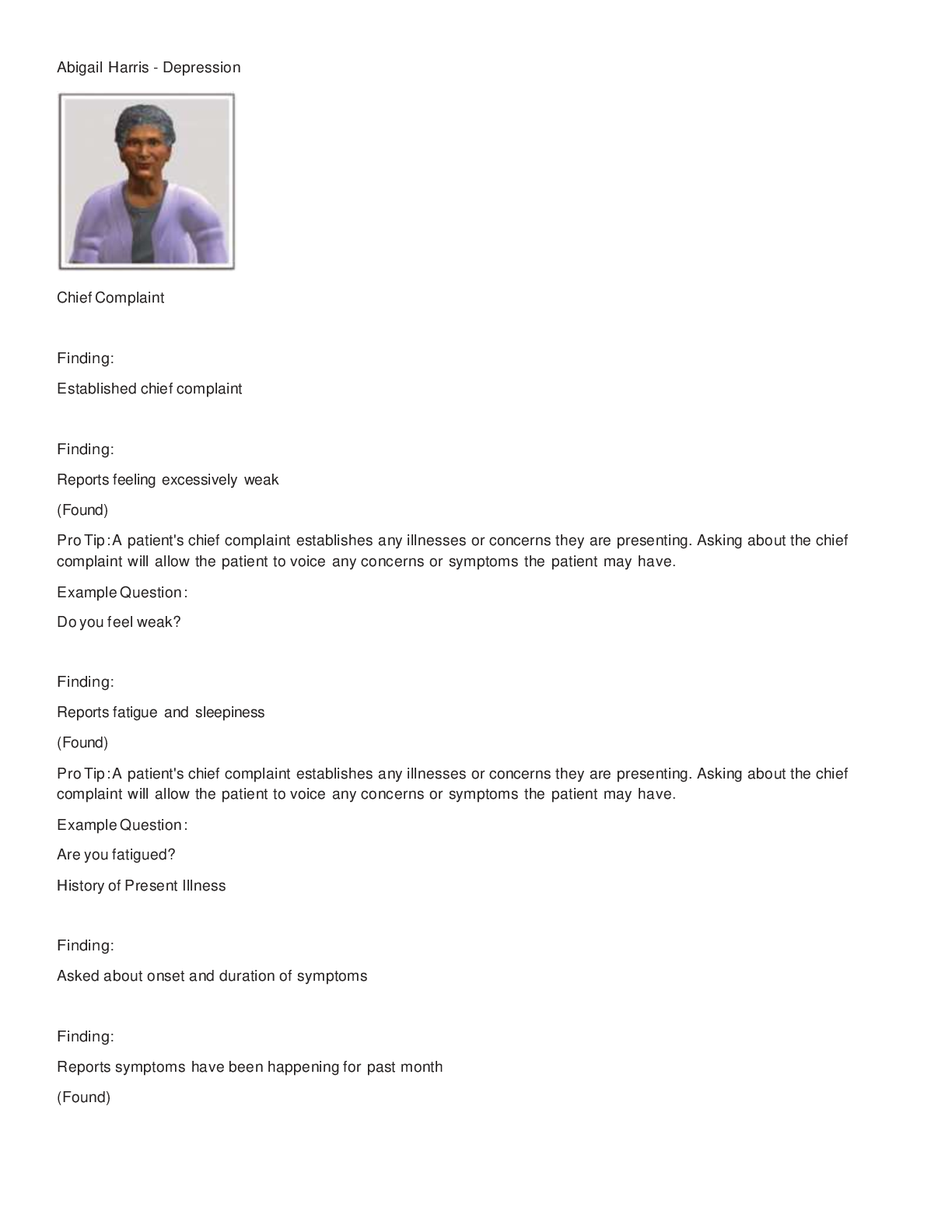
 Transcript.png)

